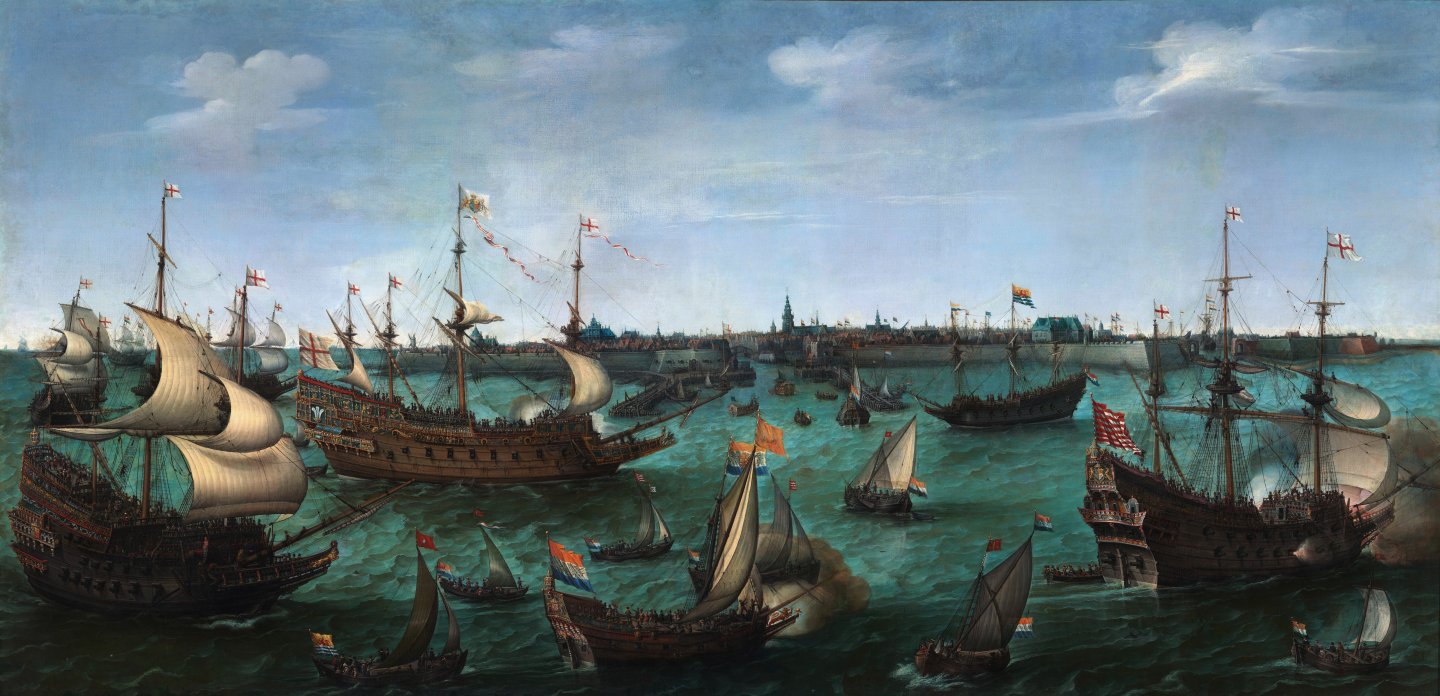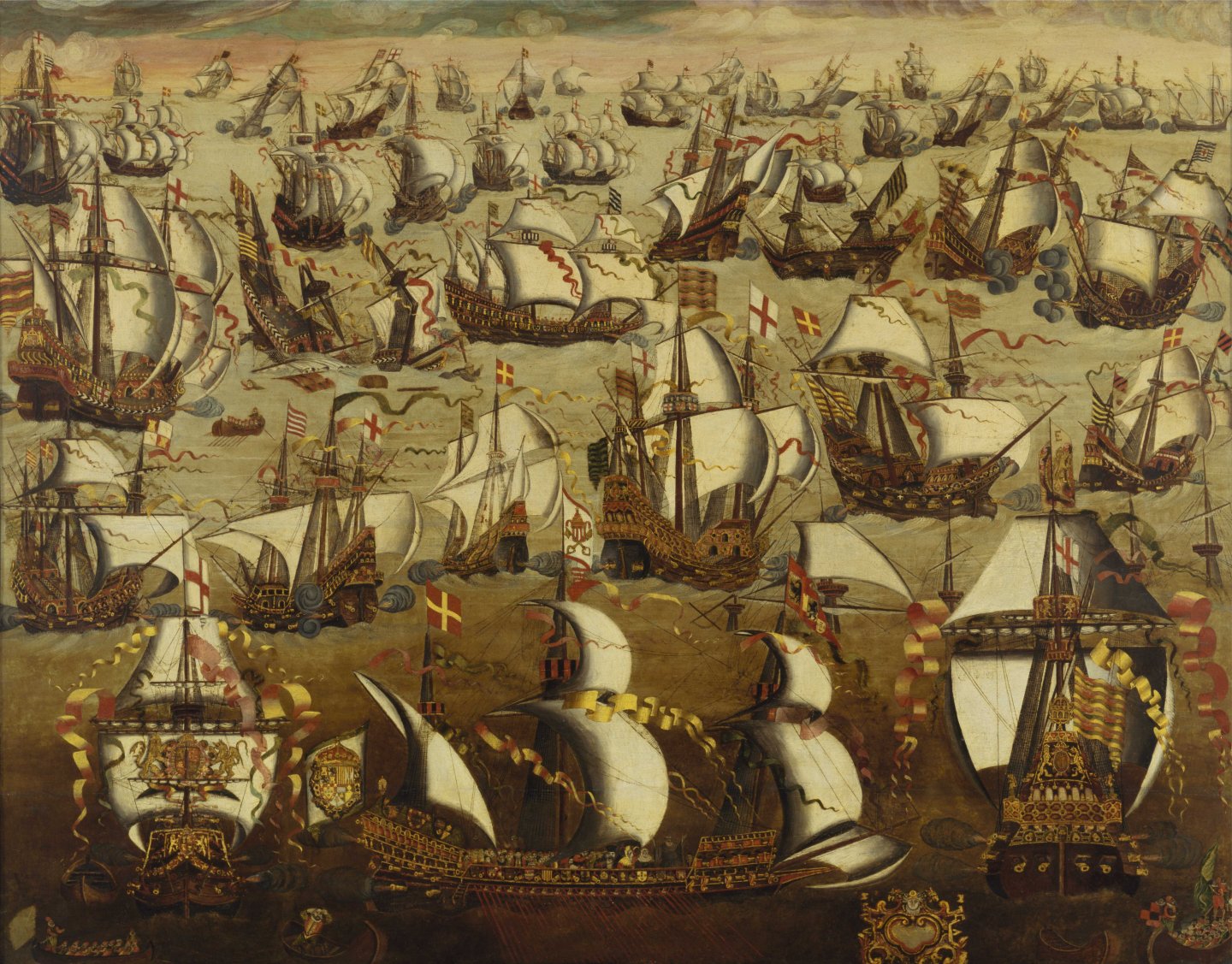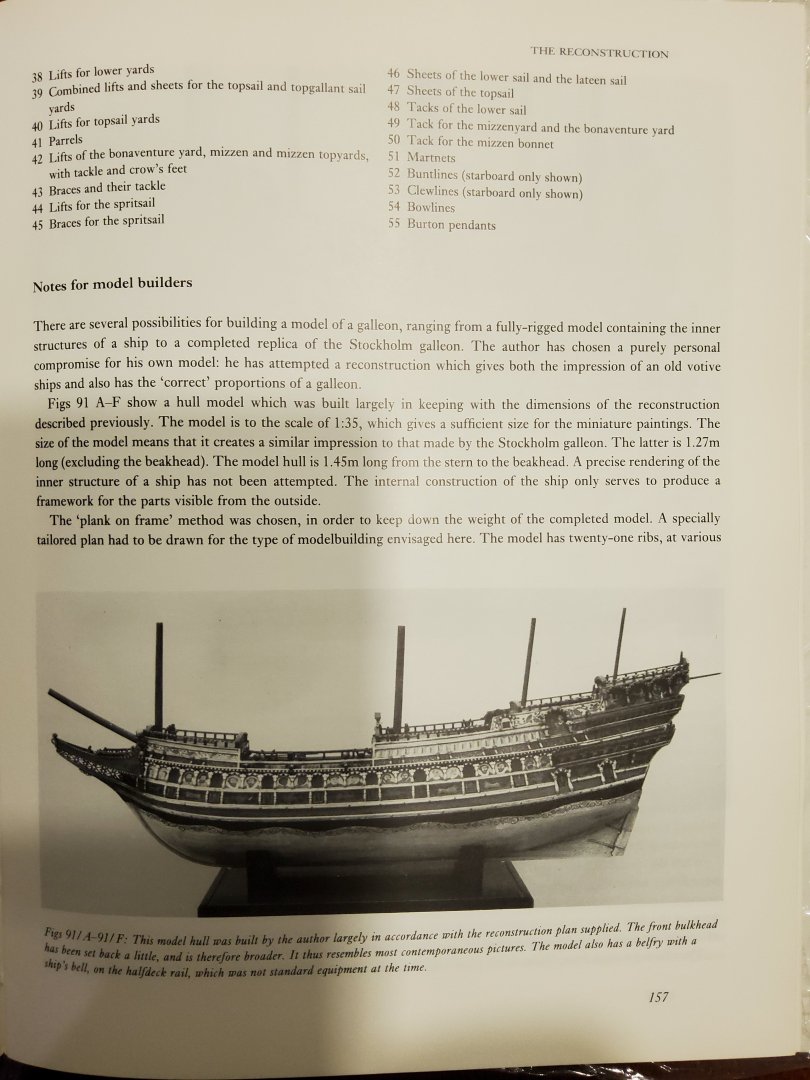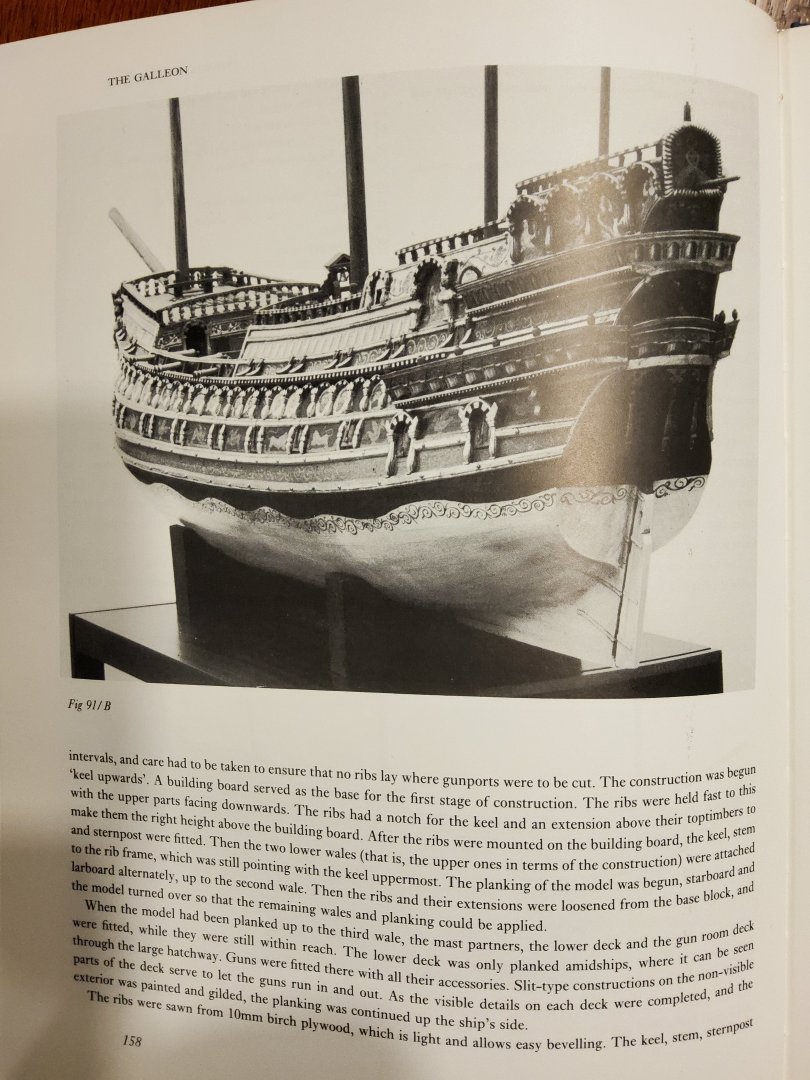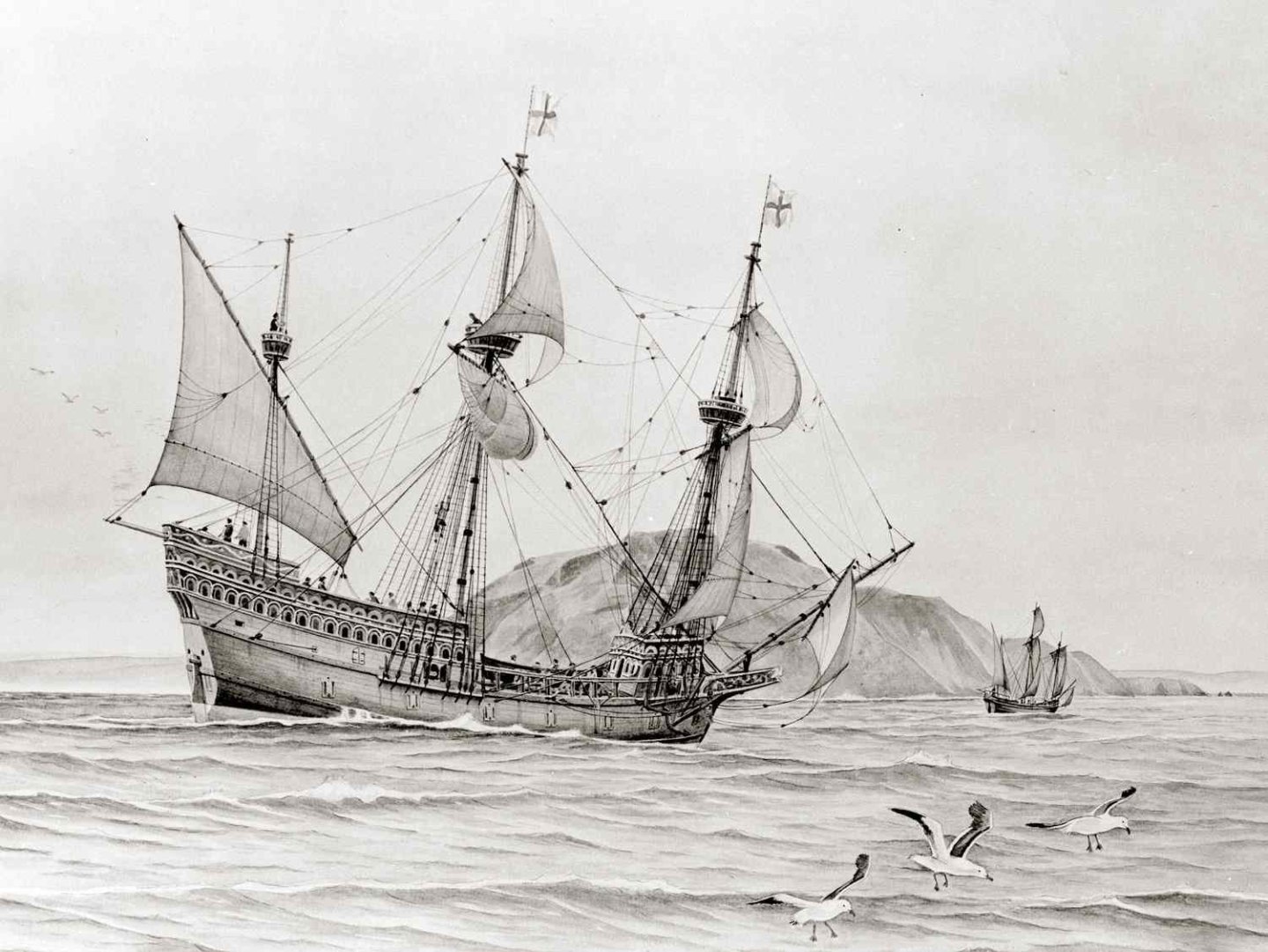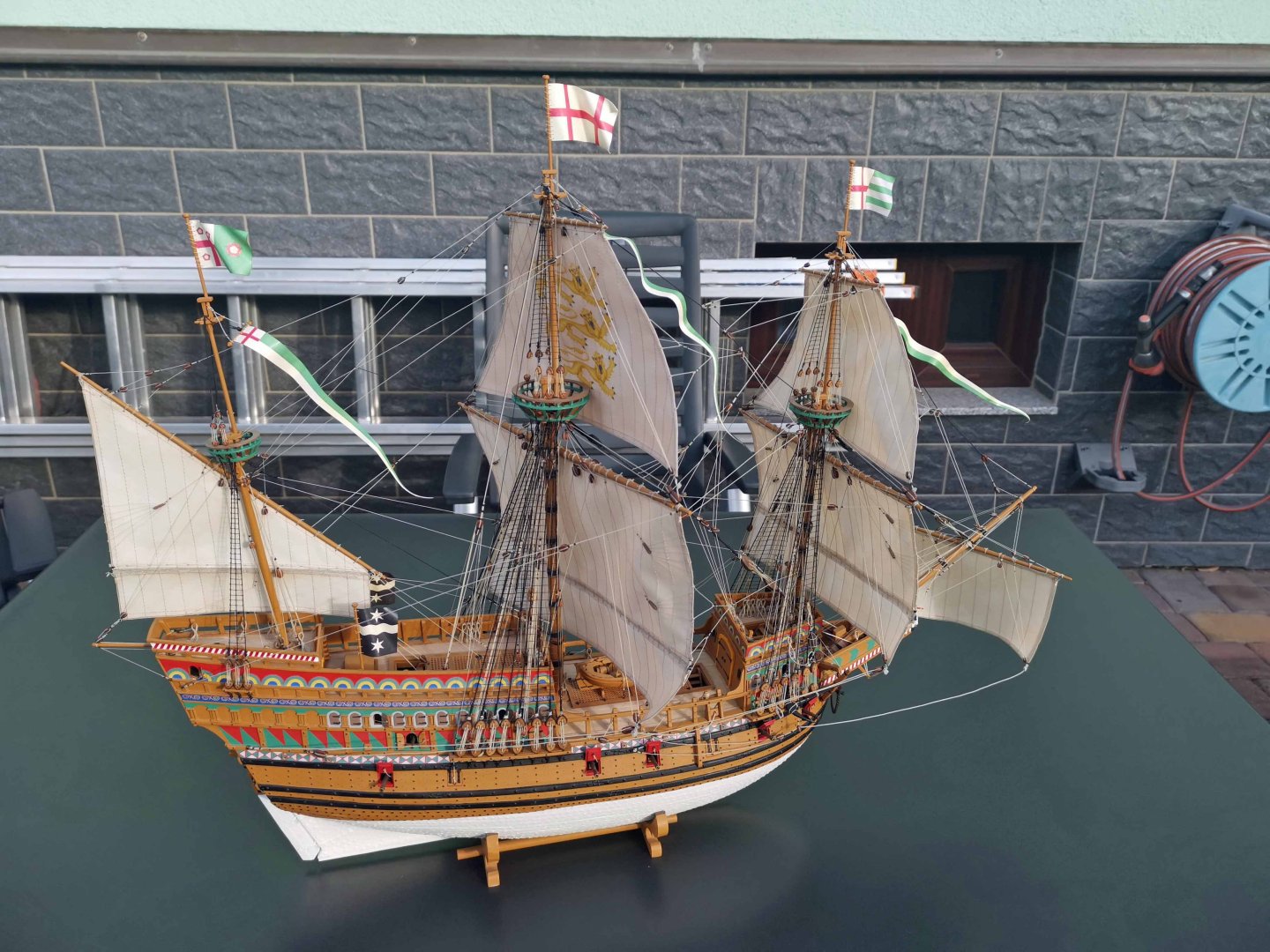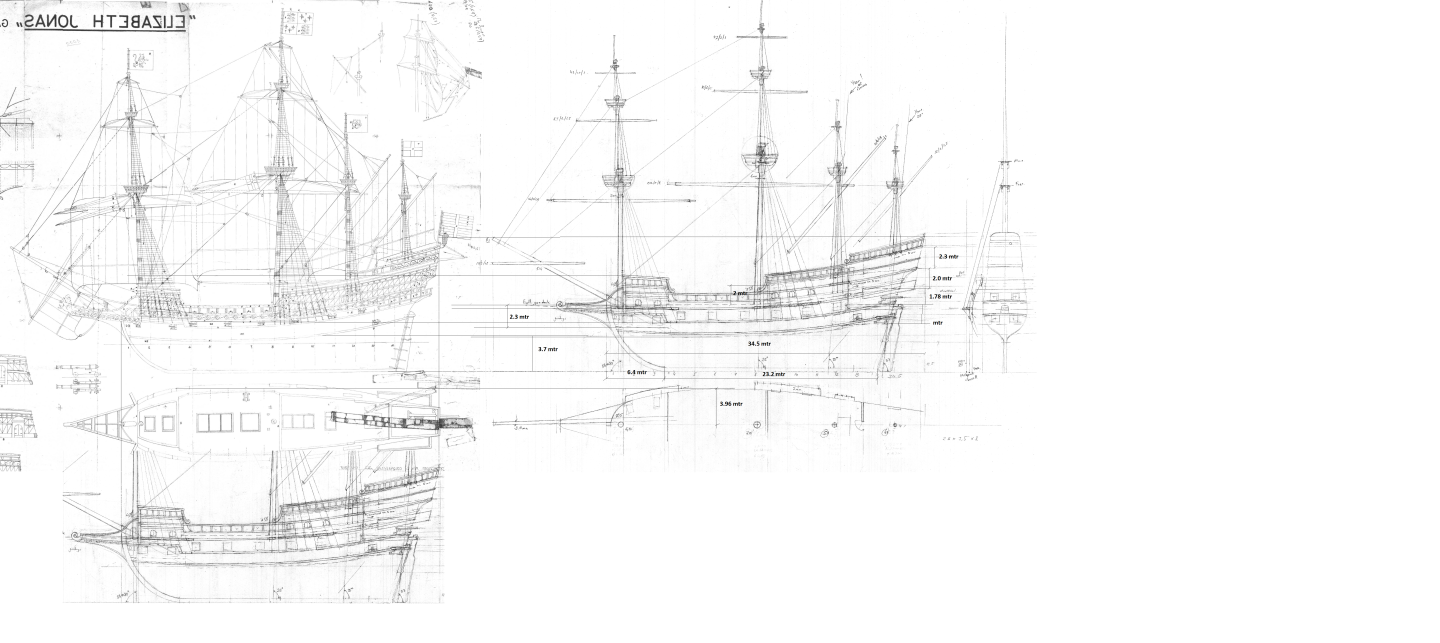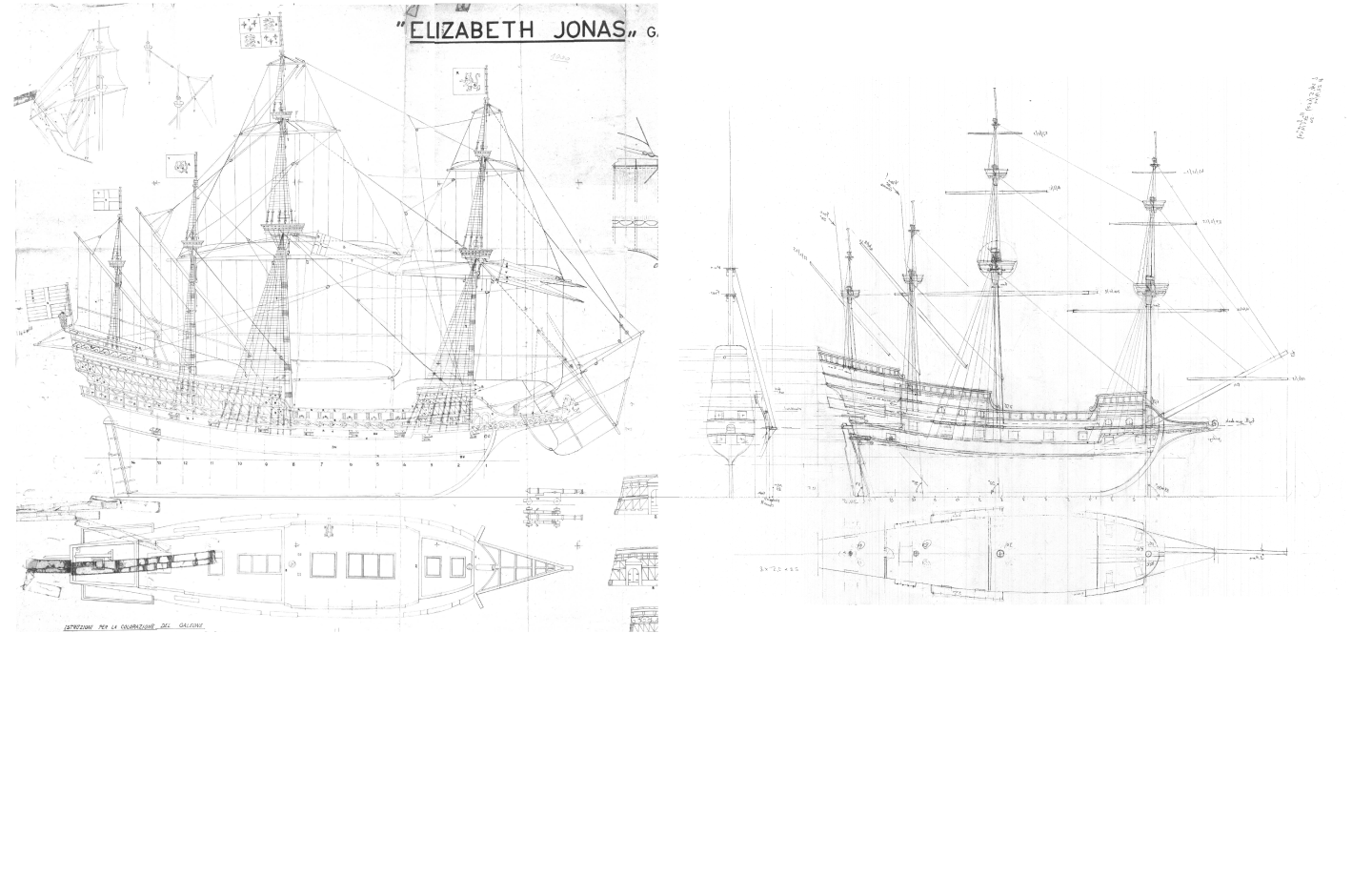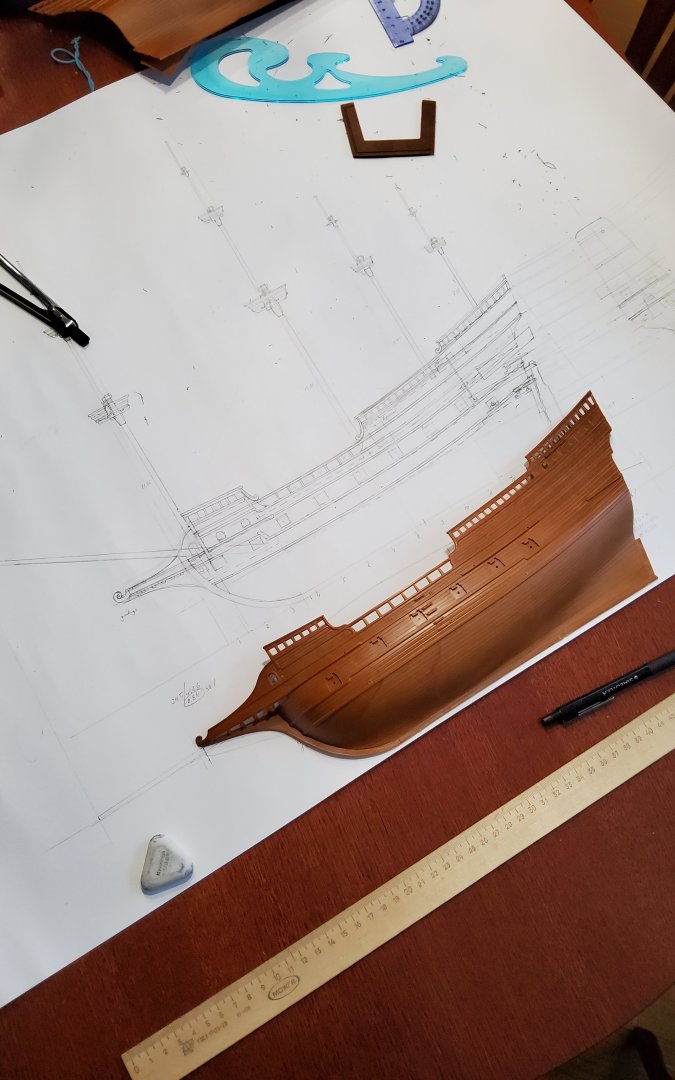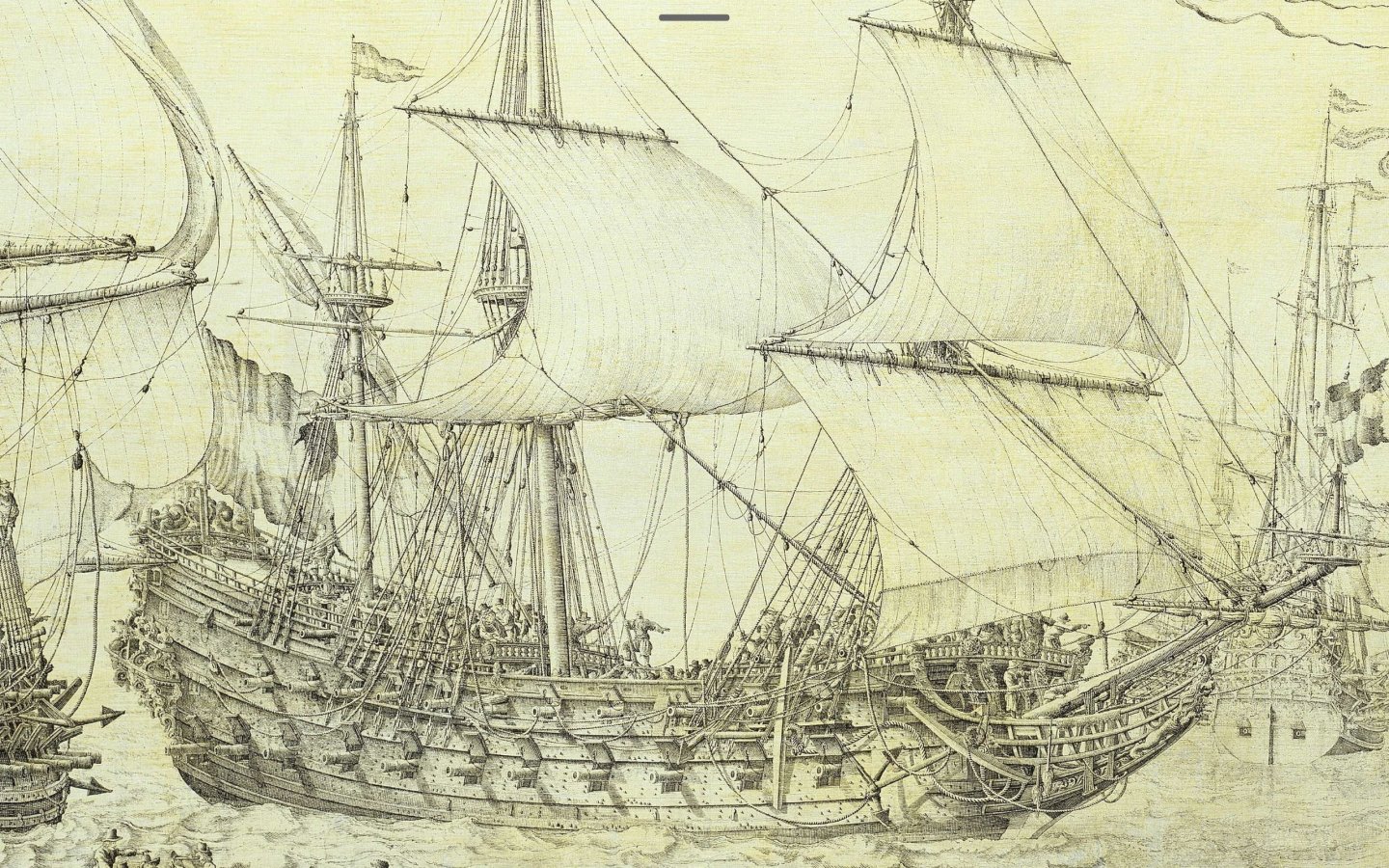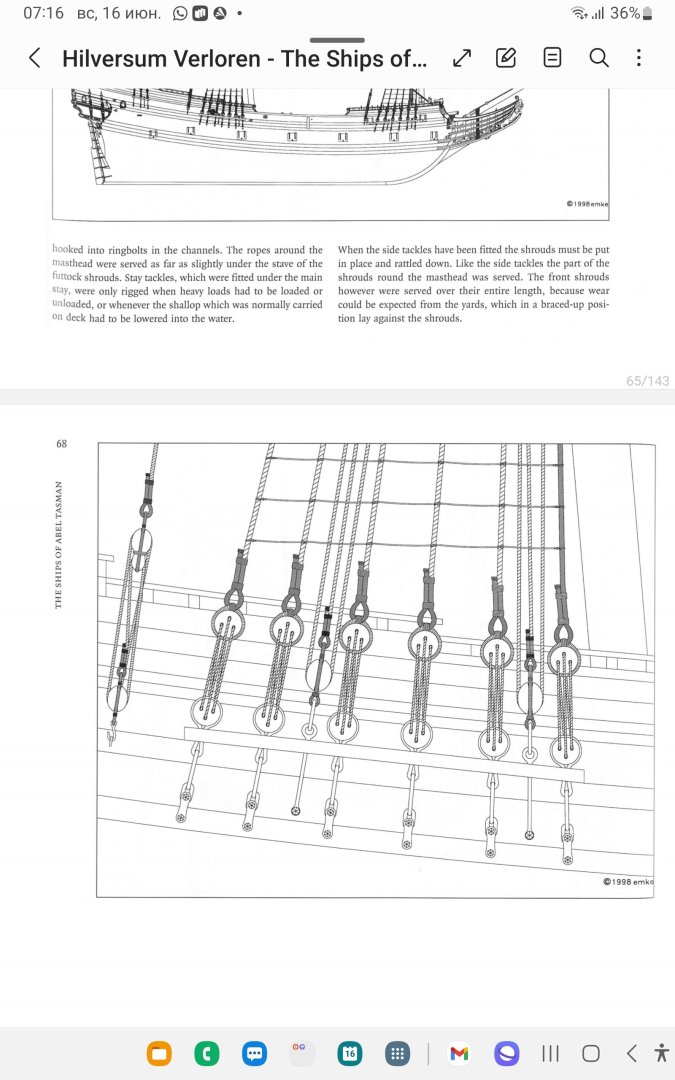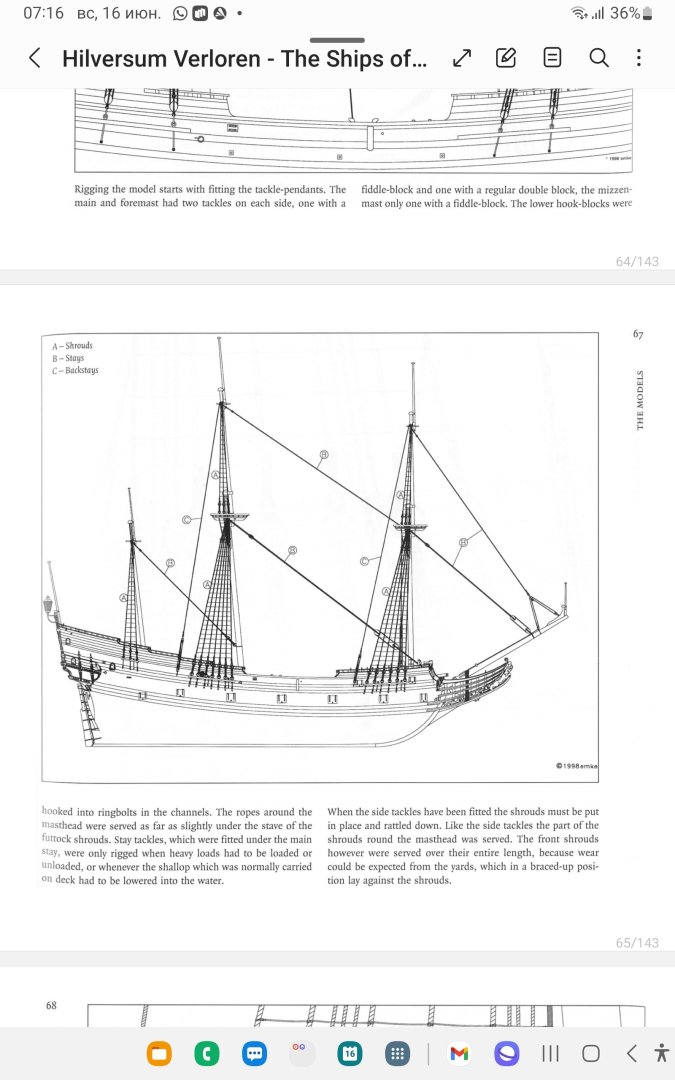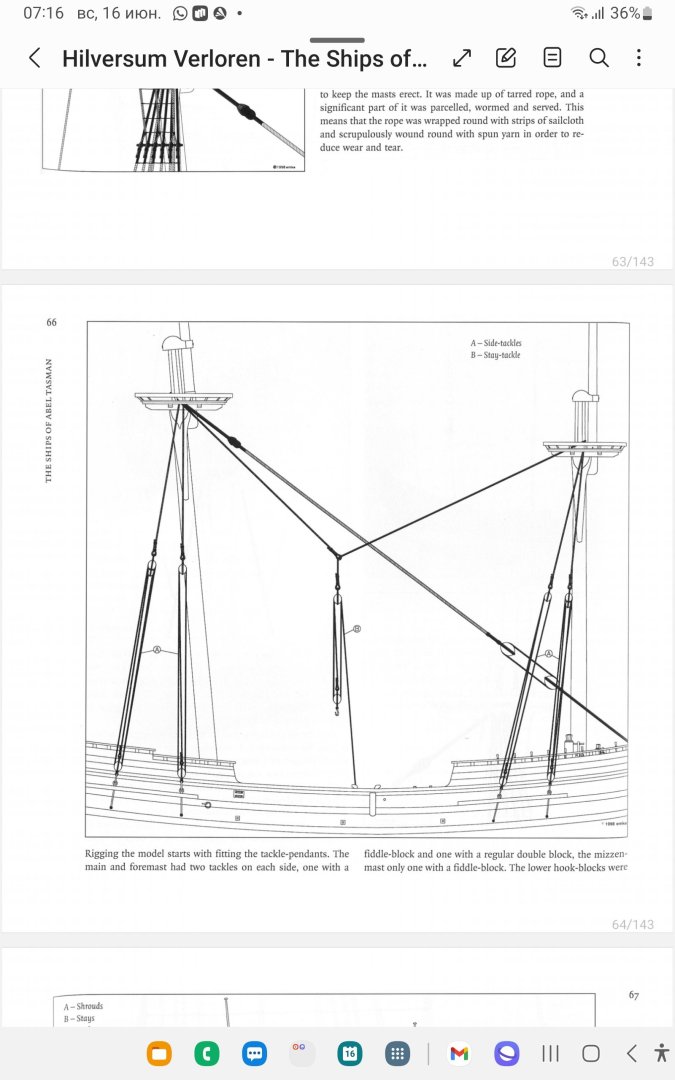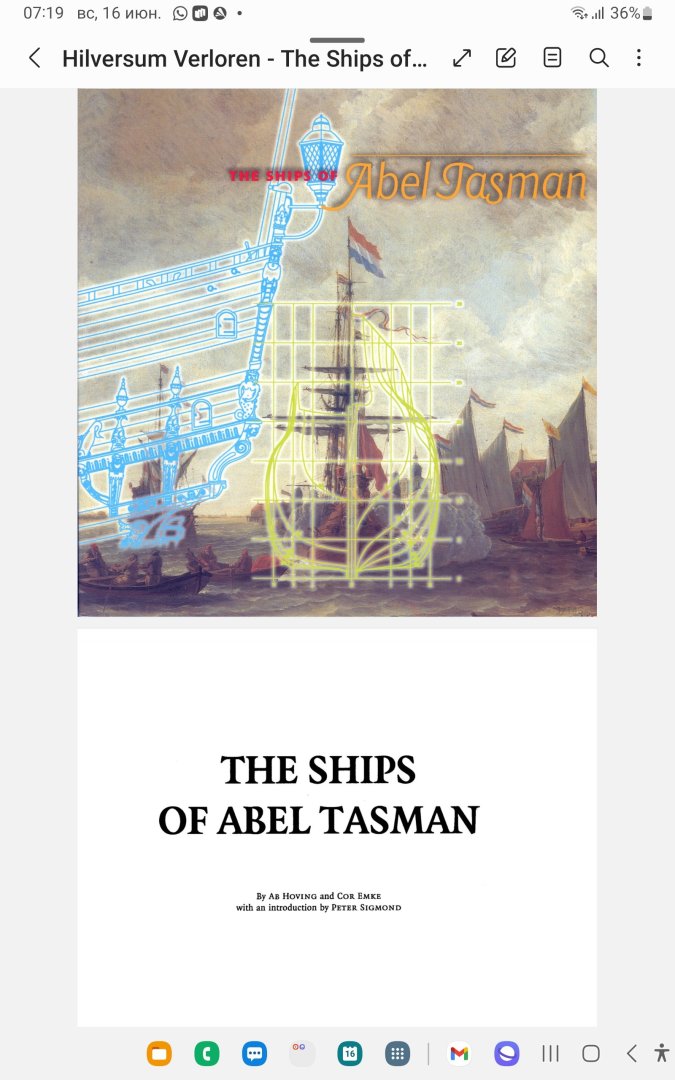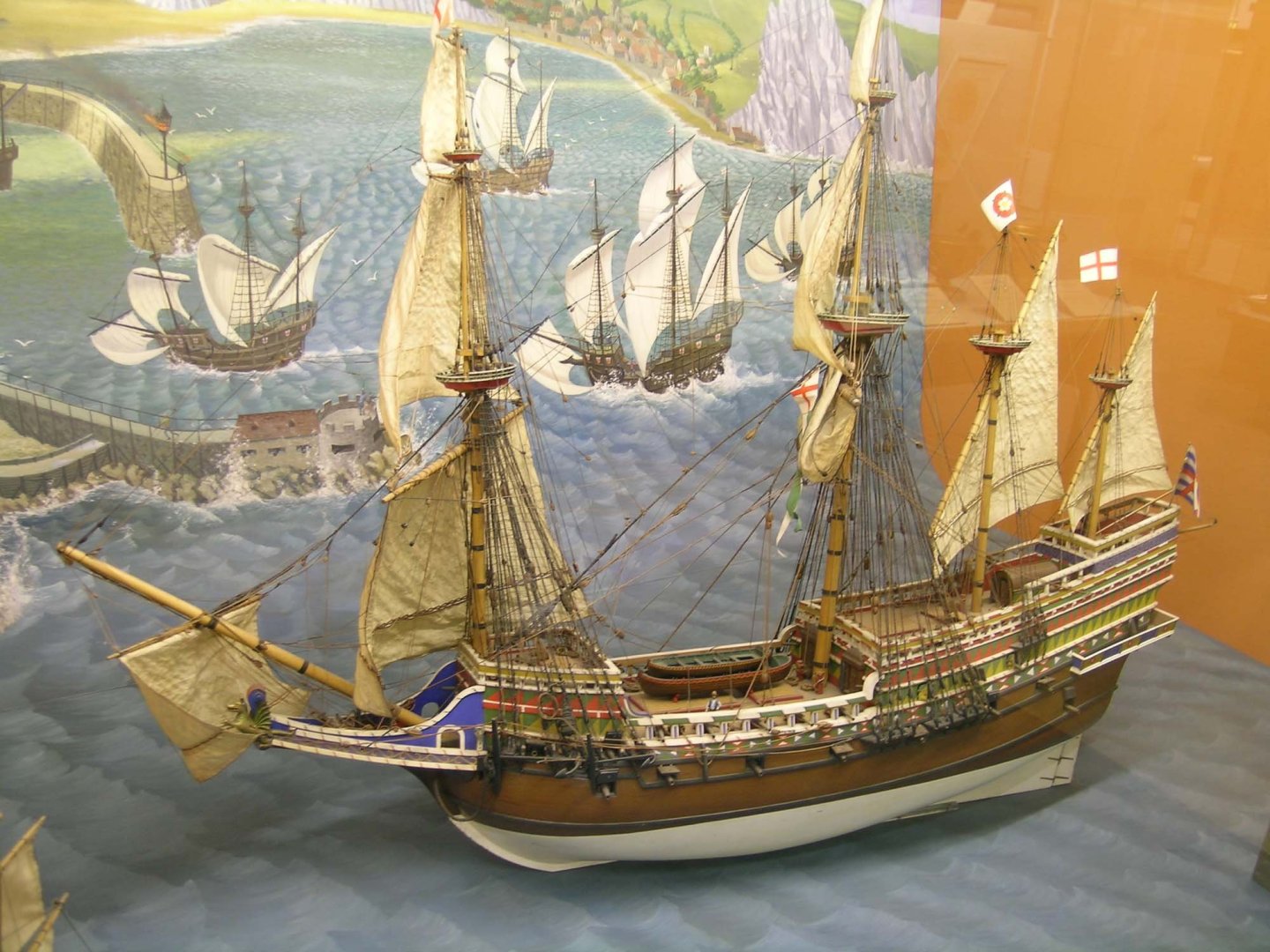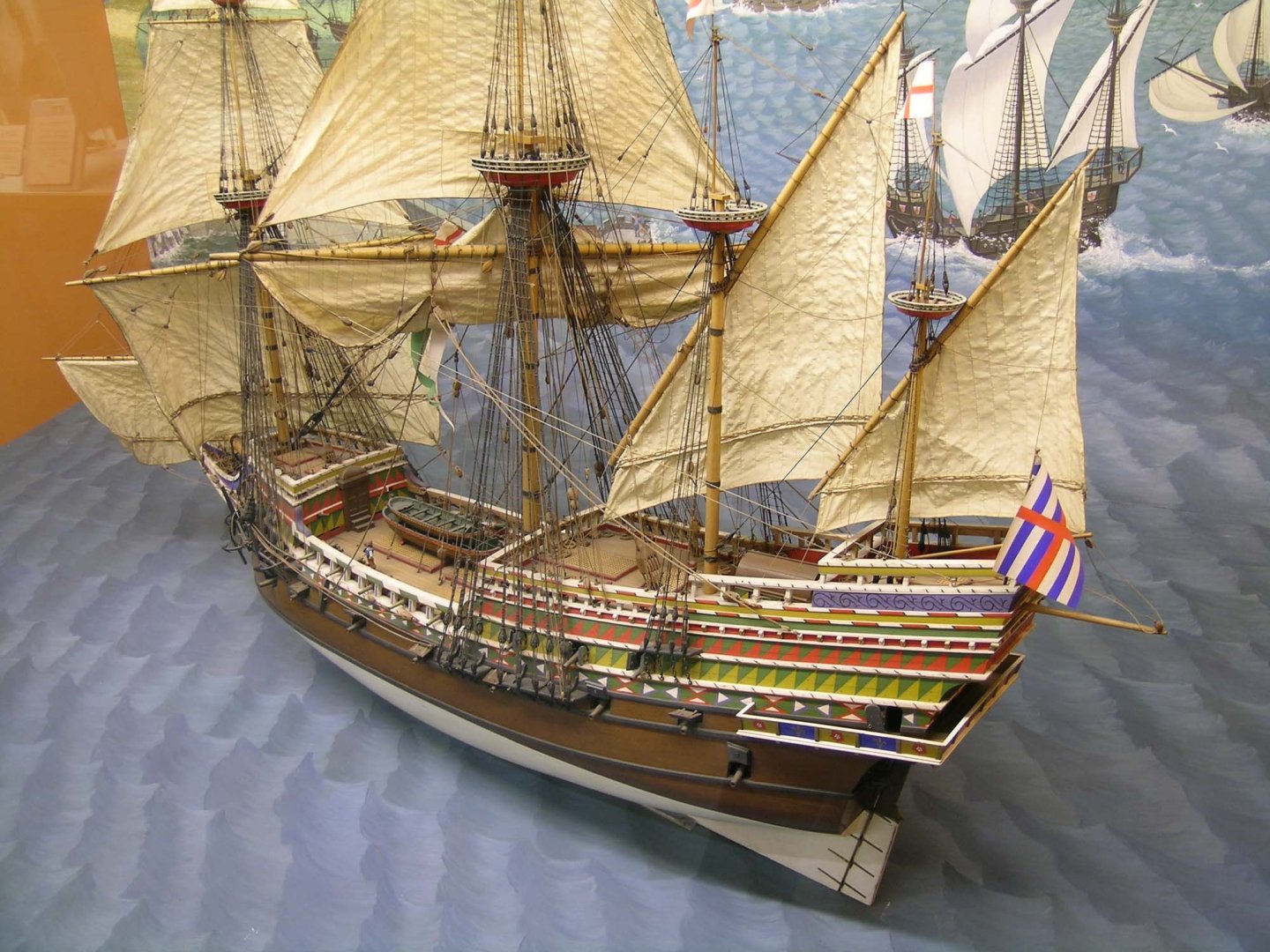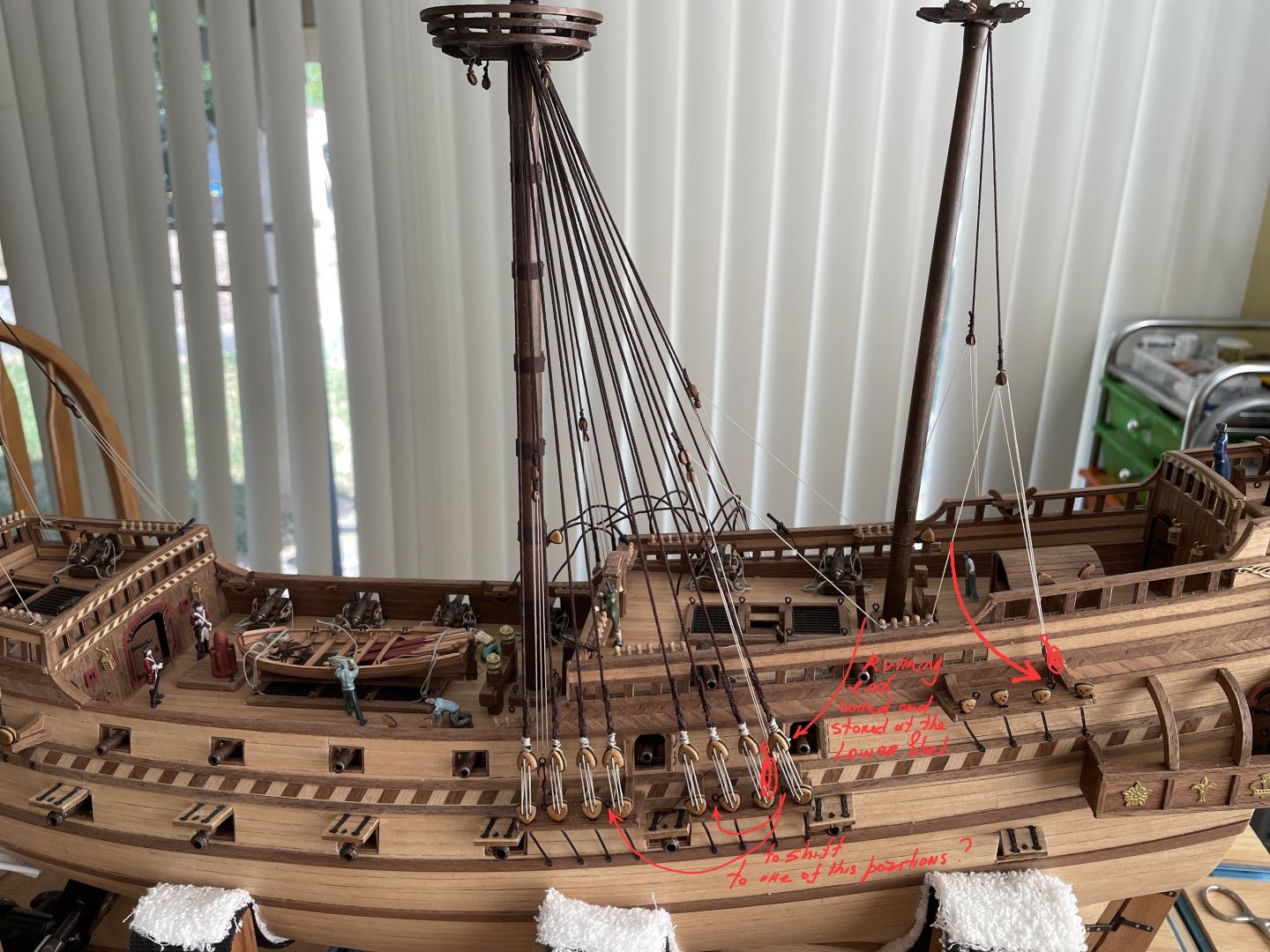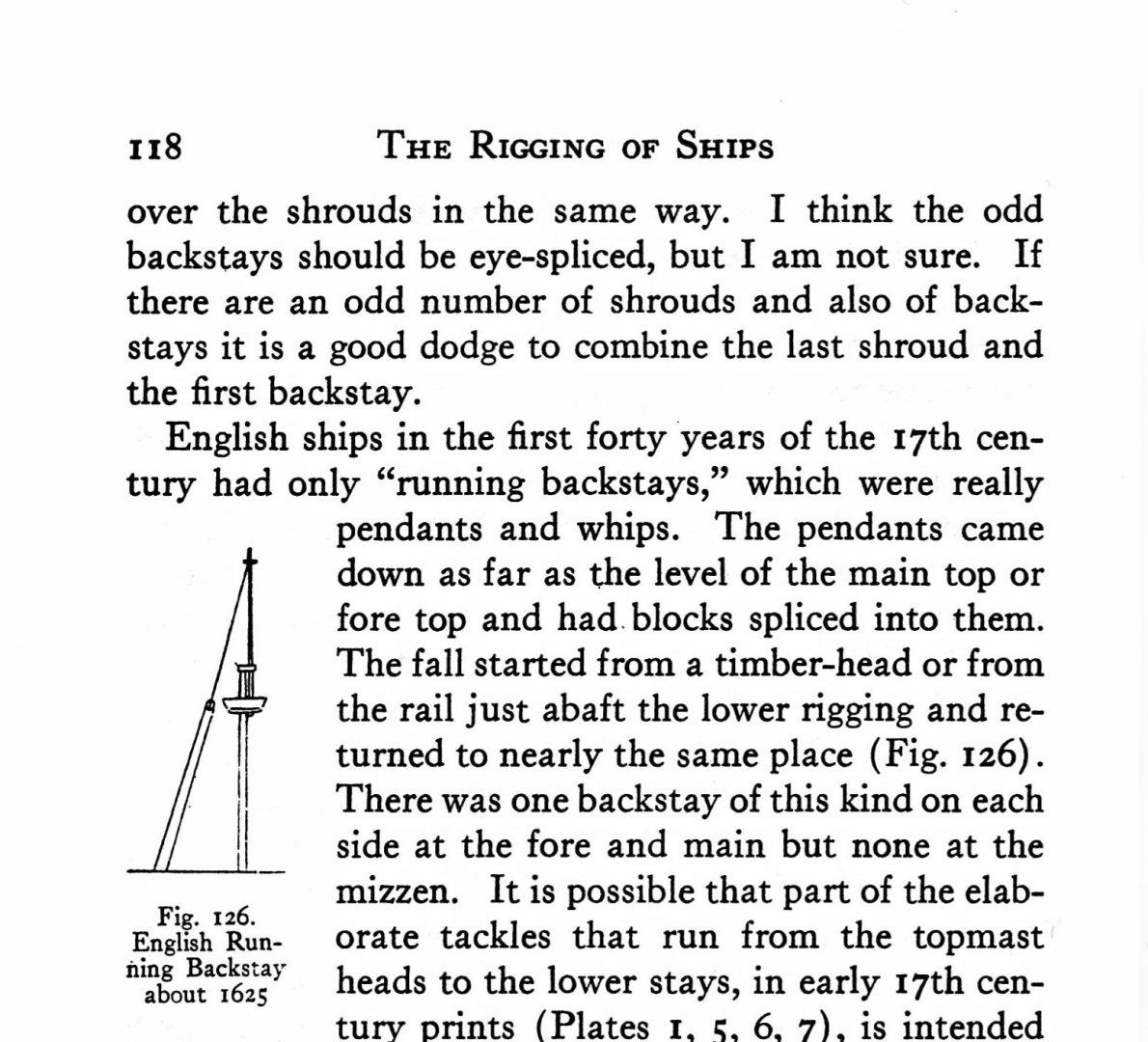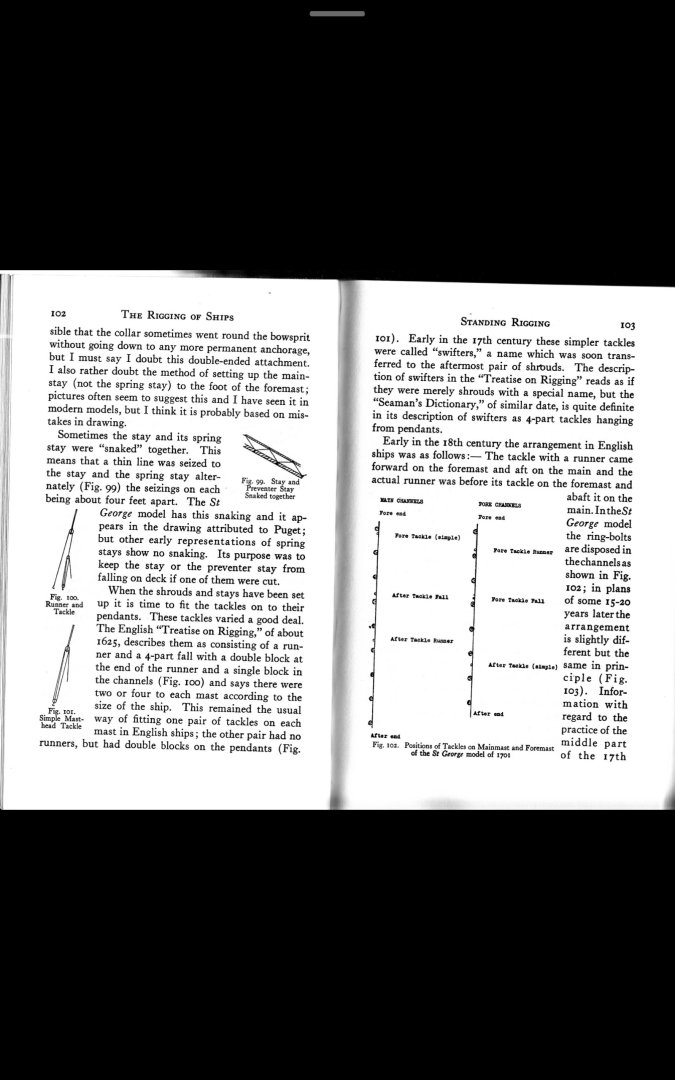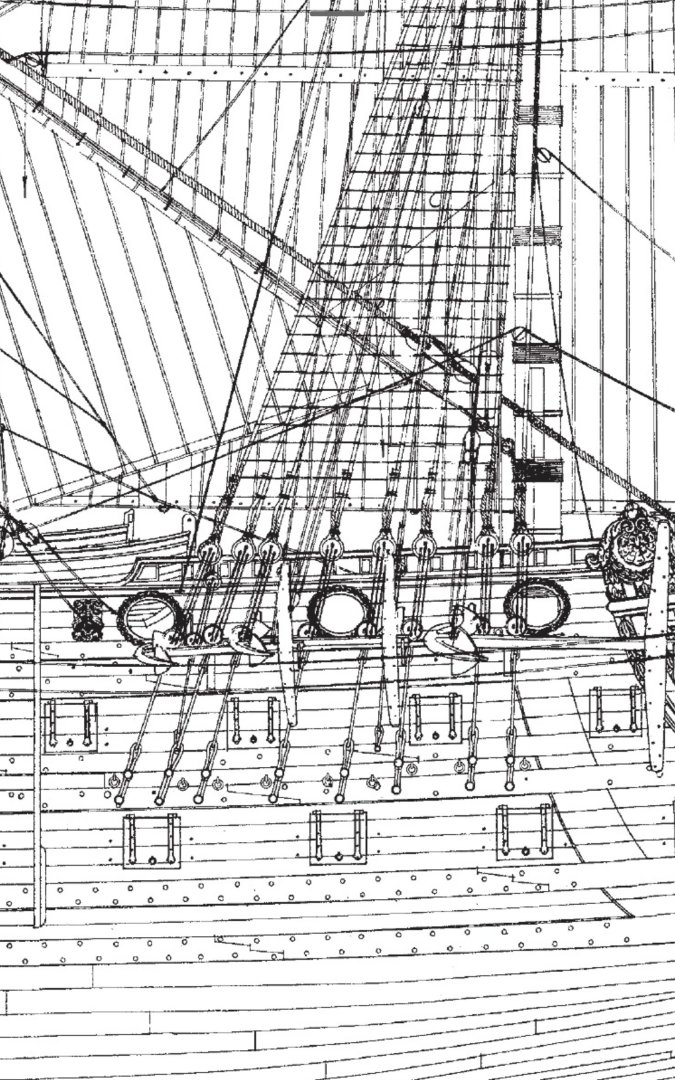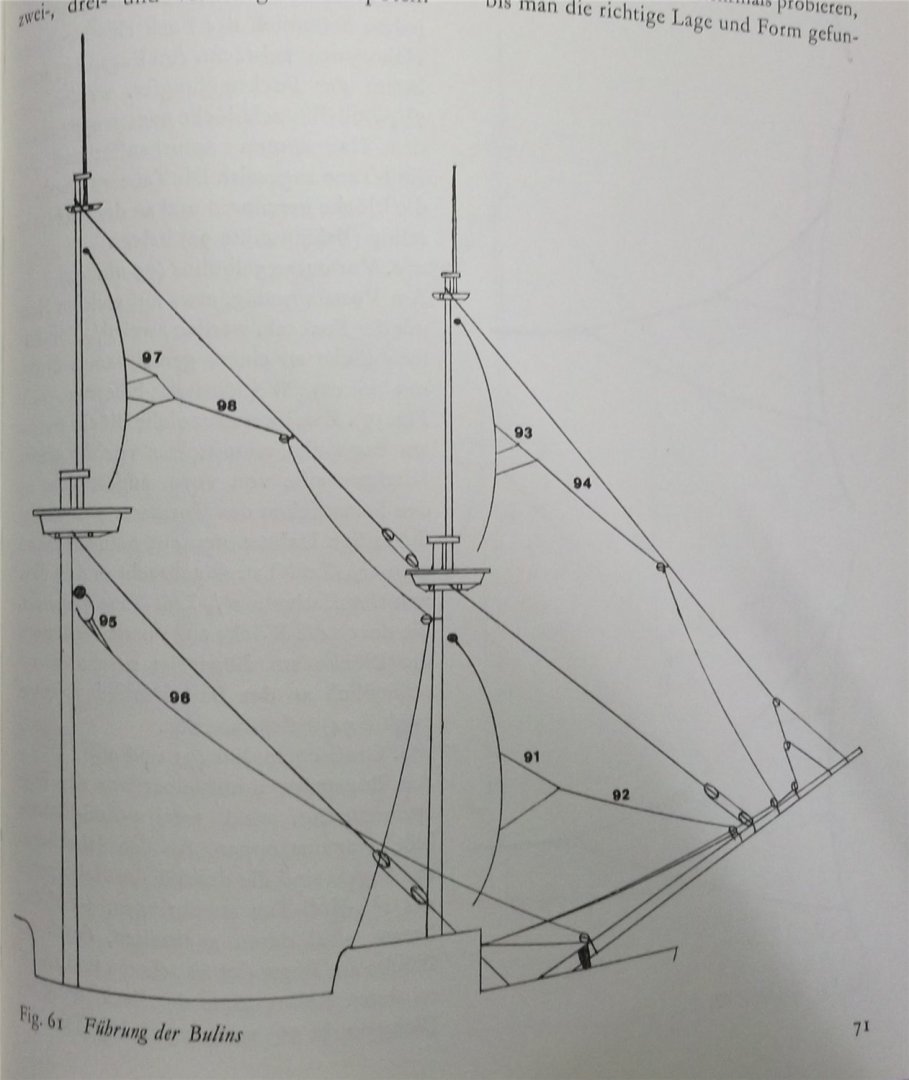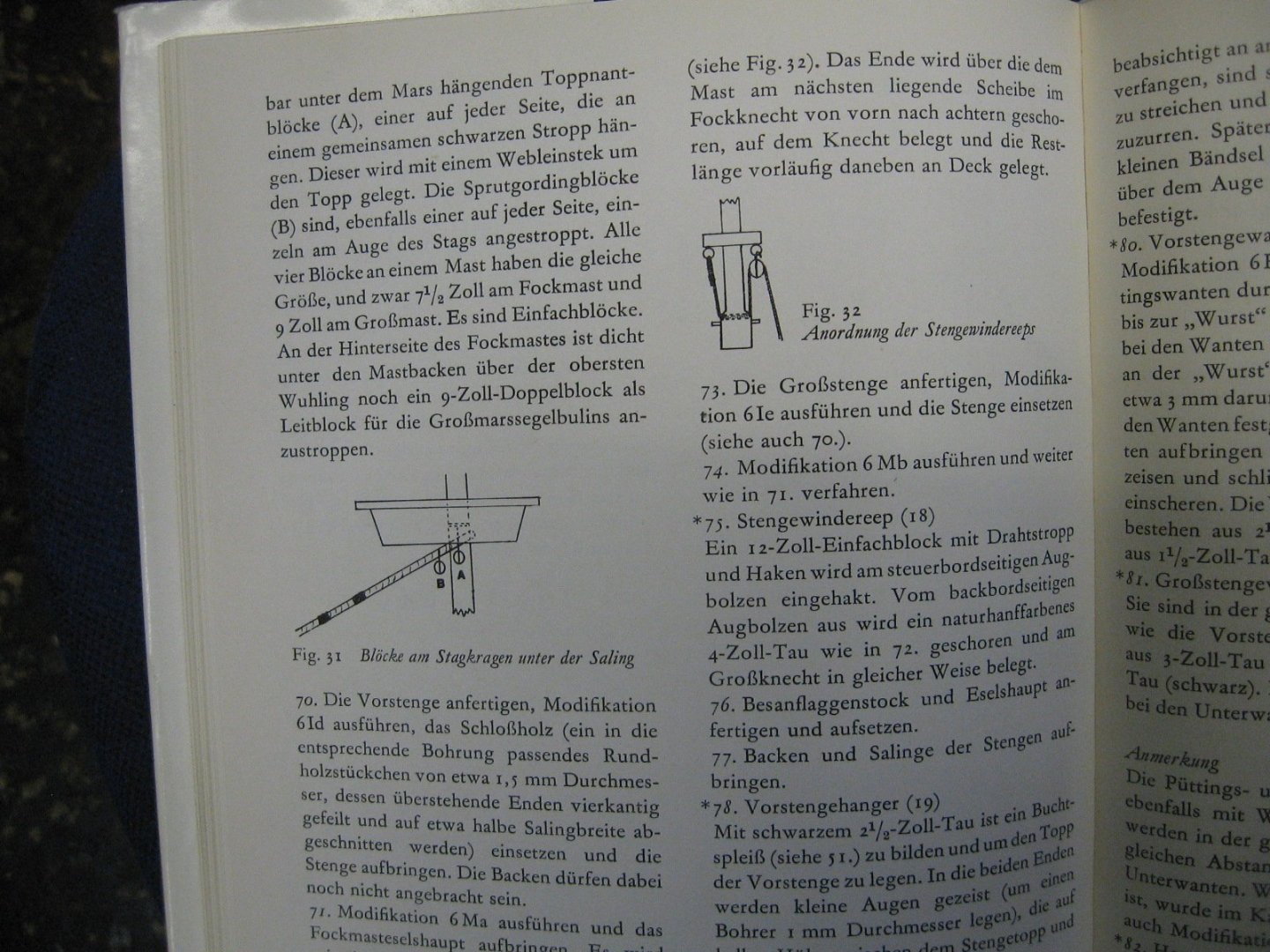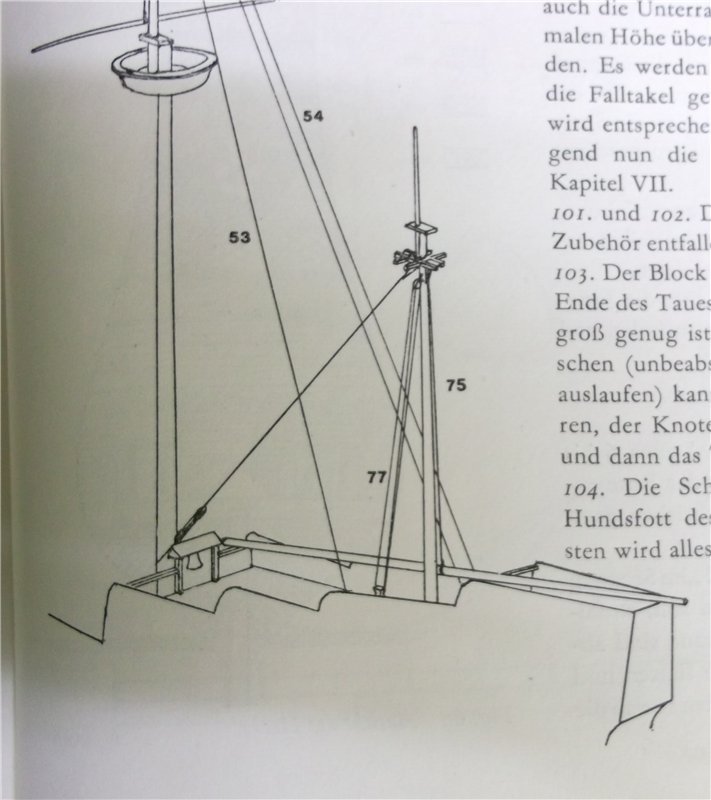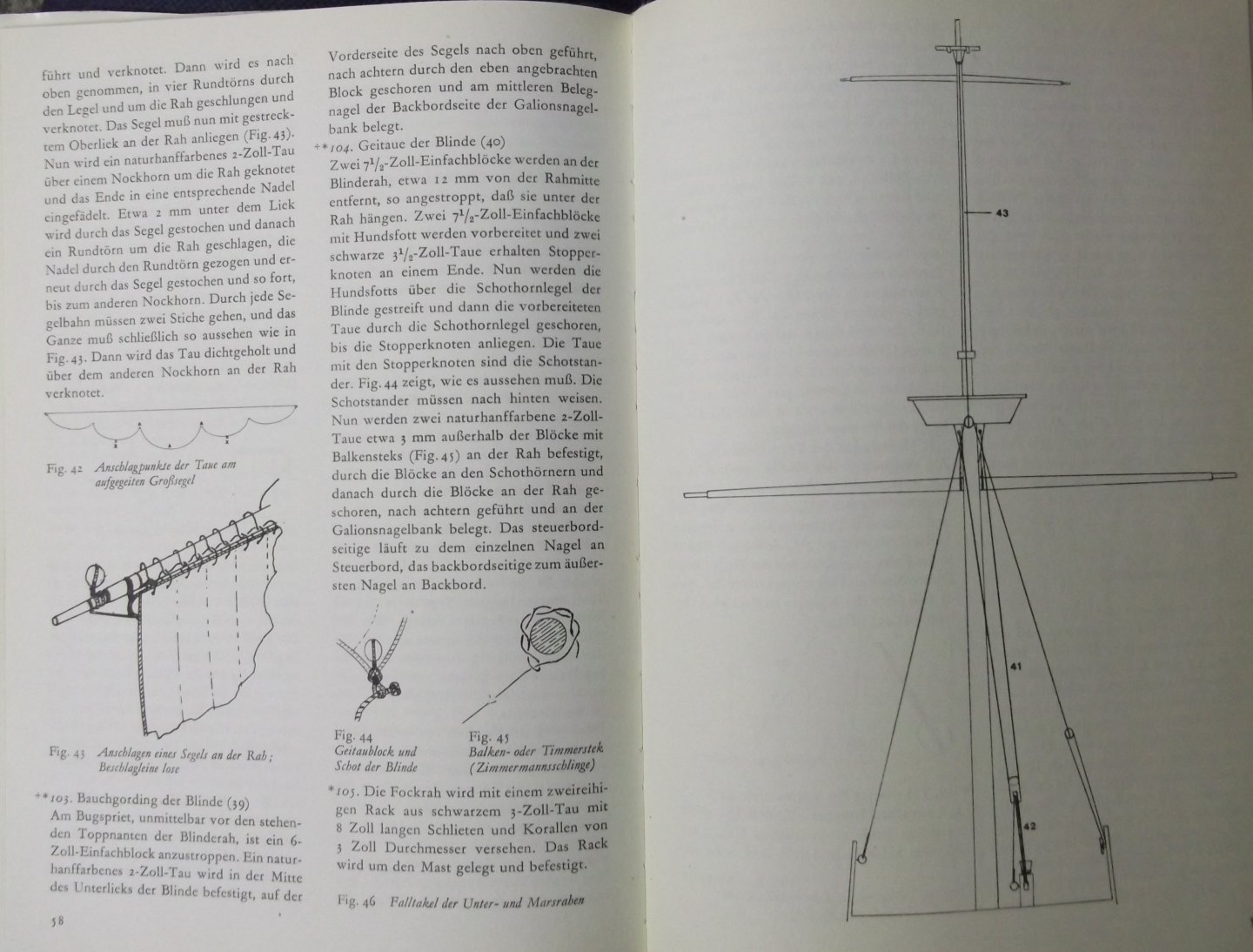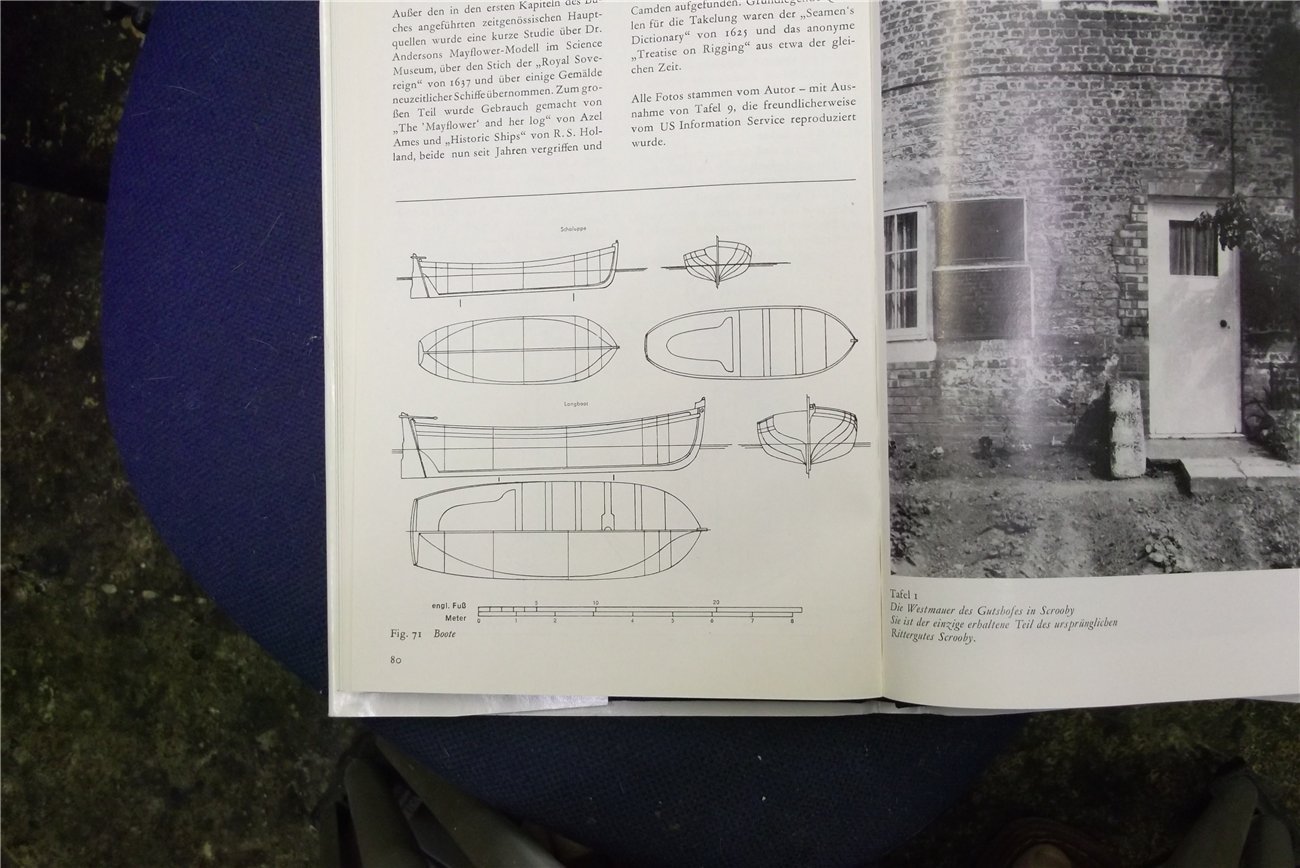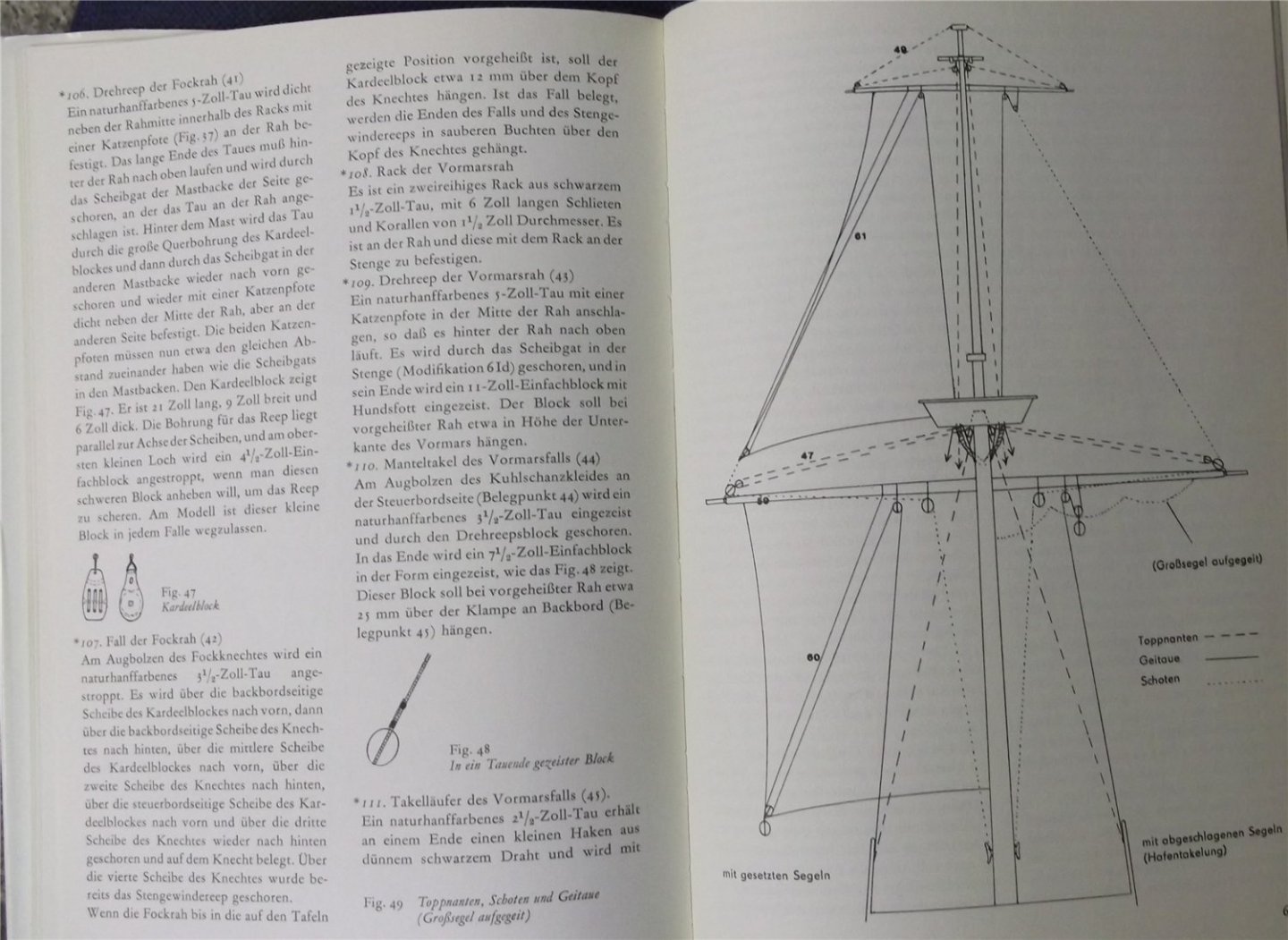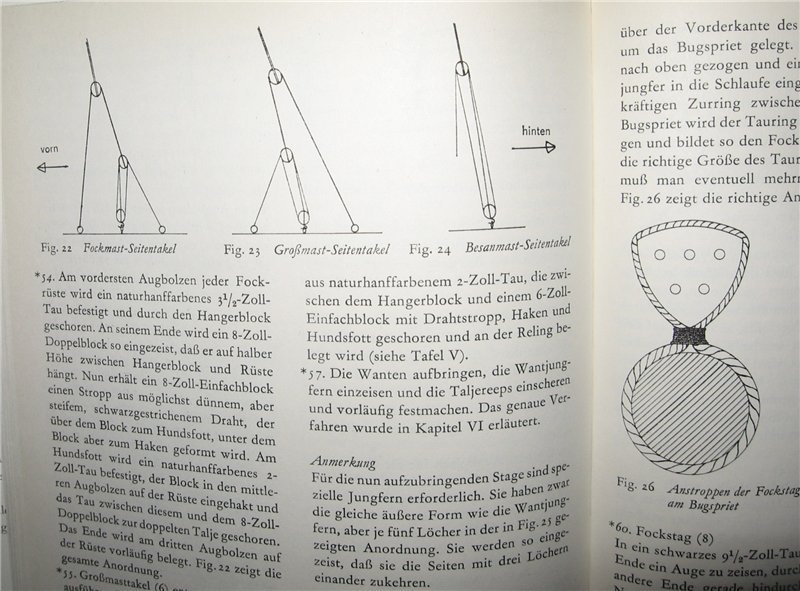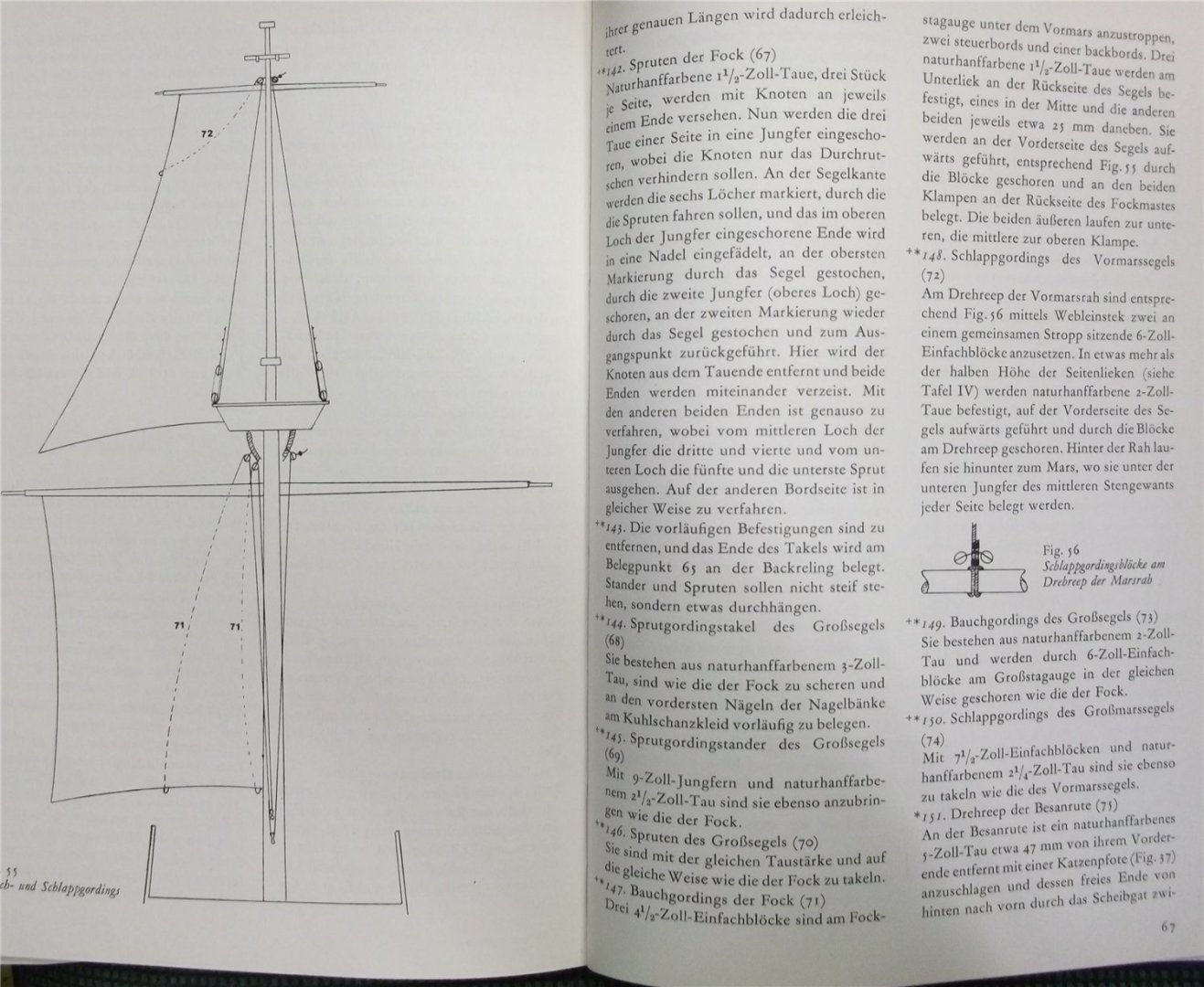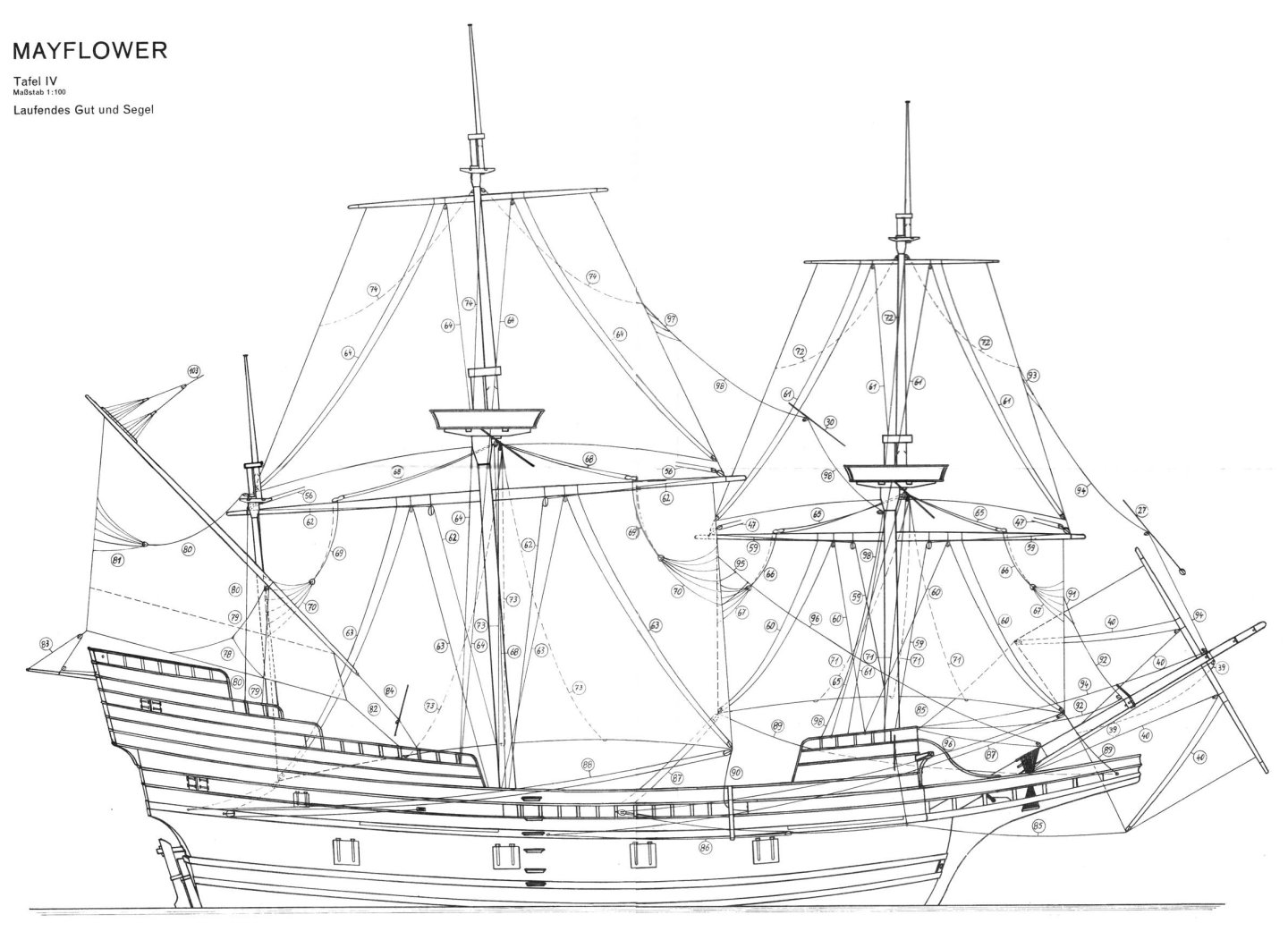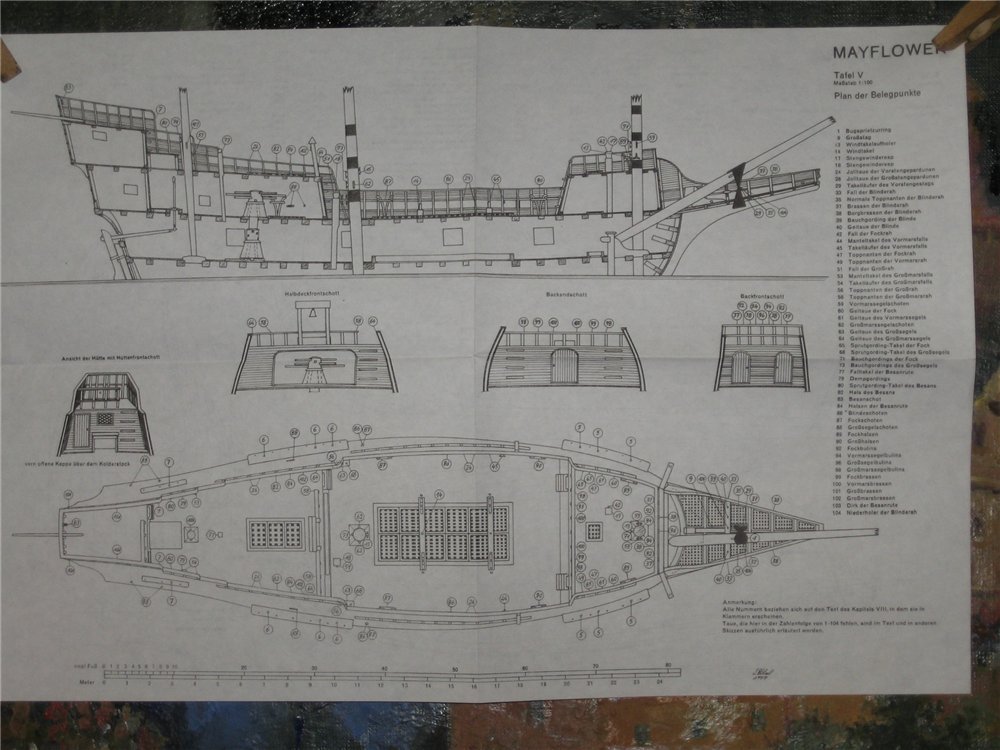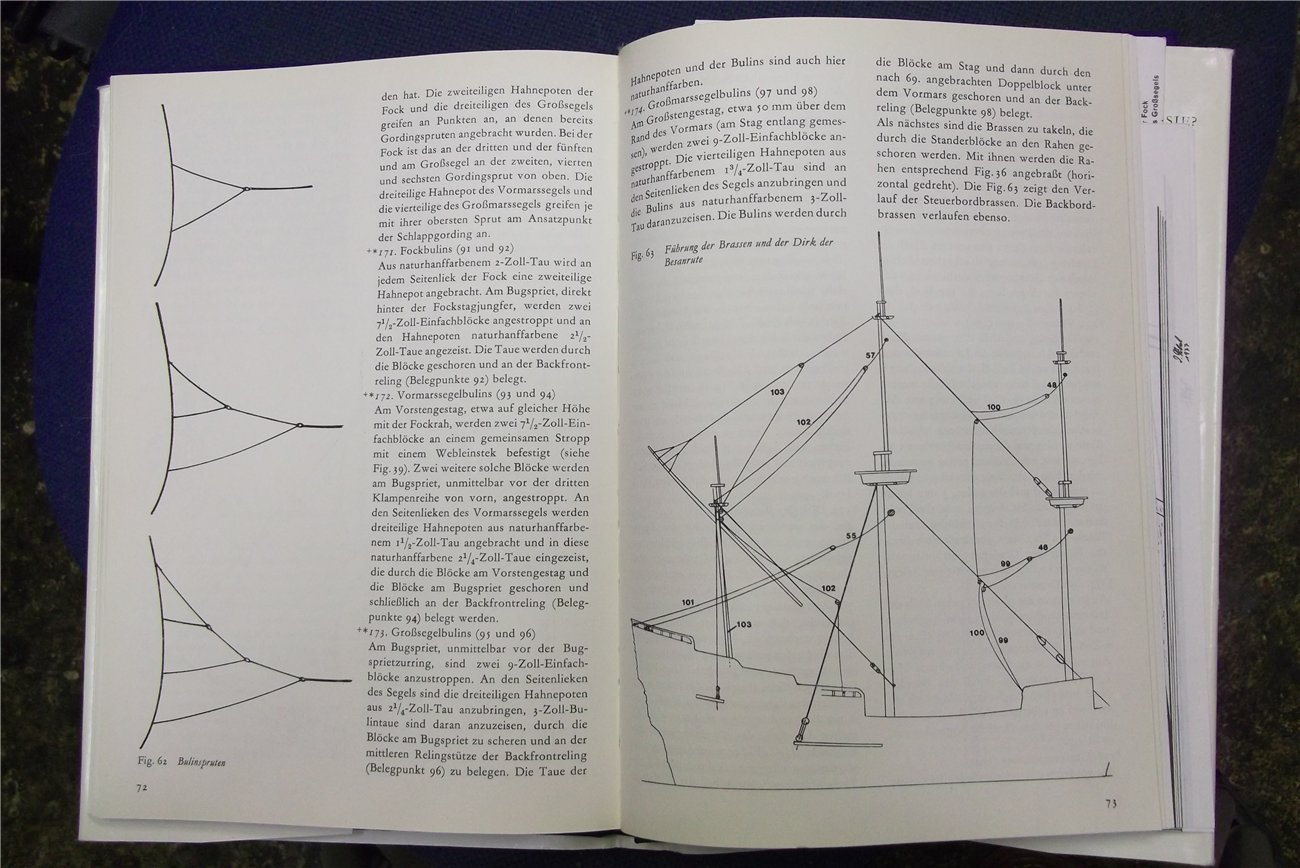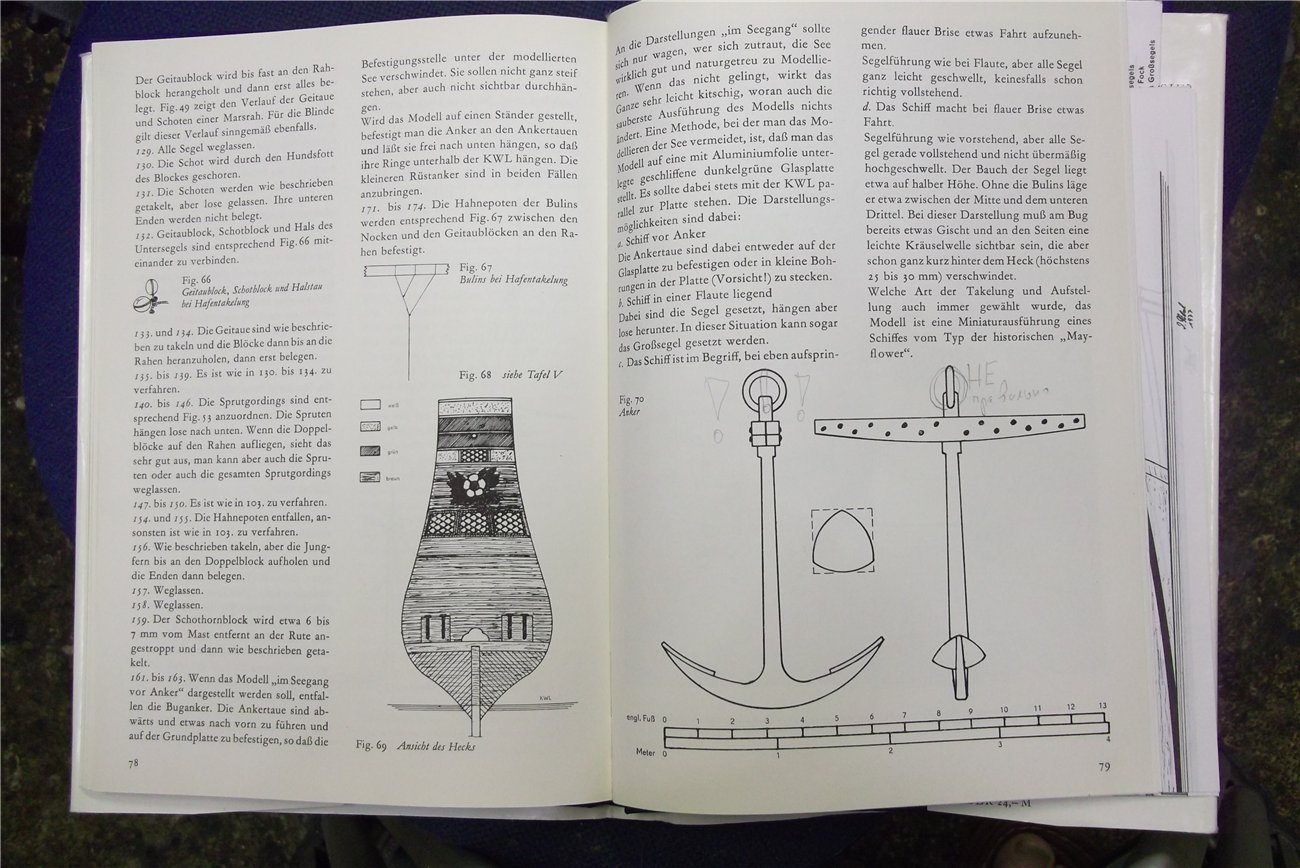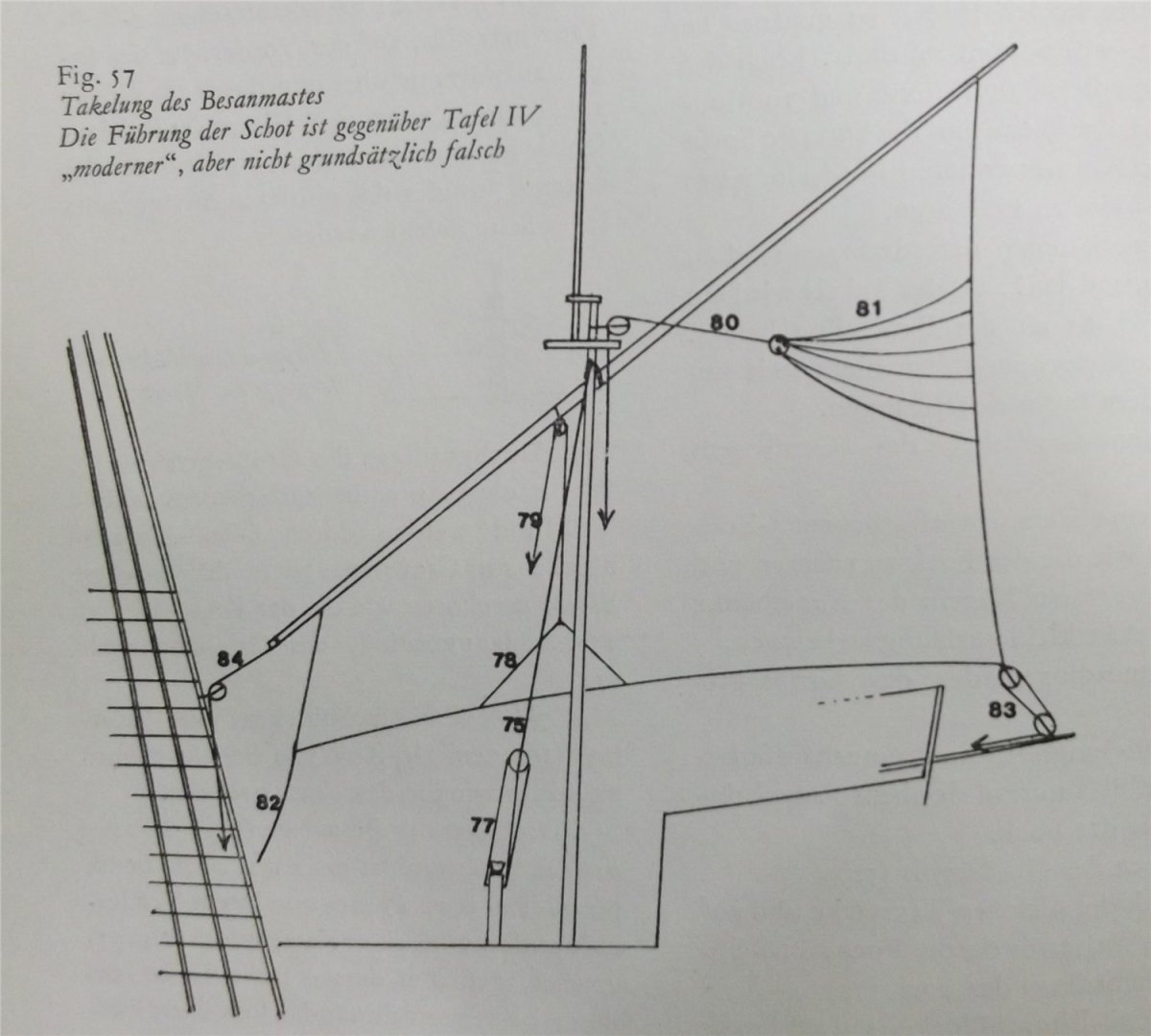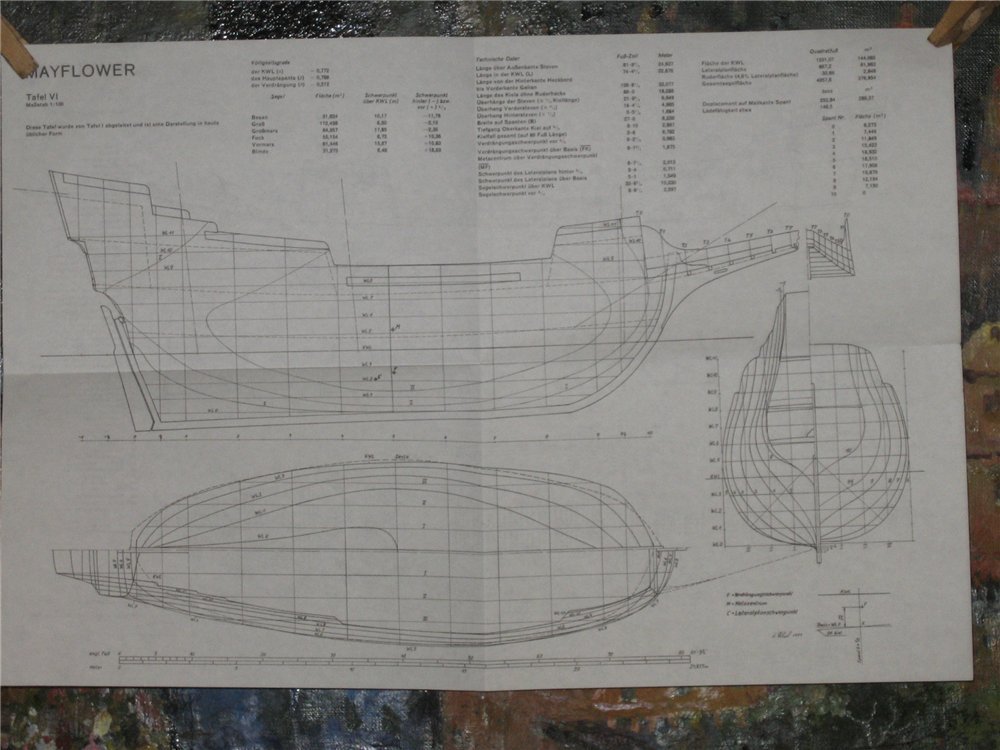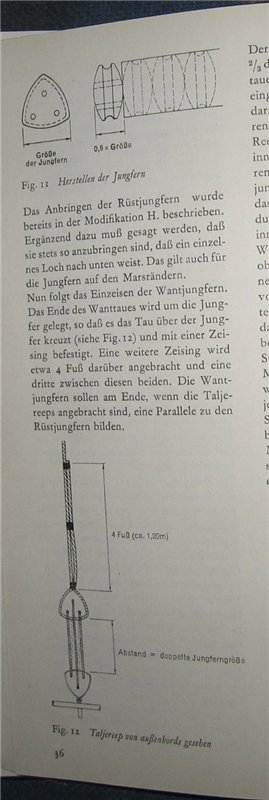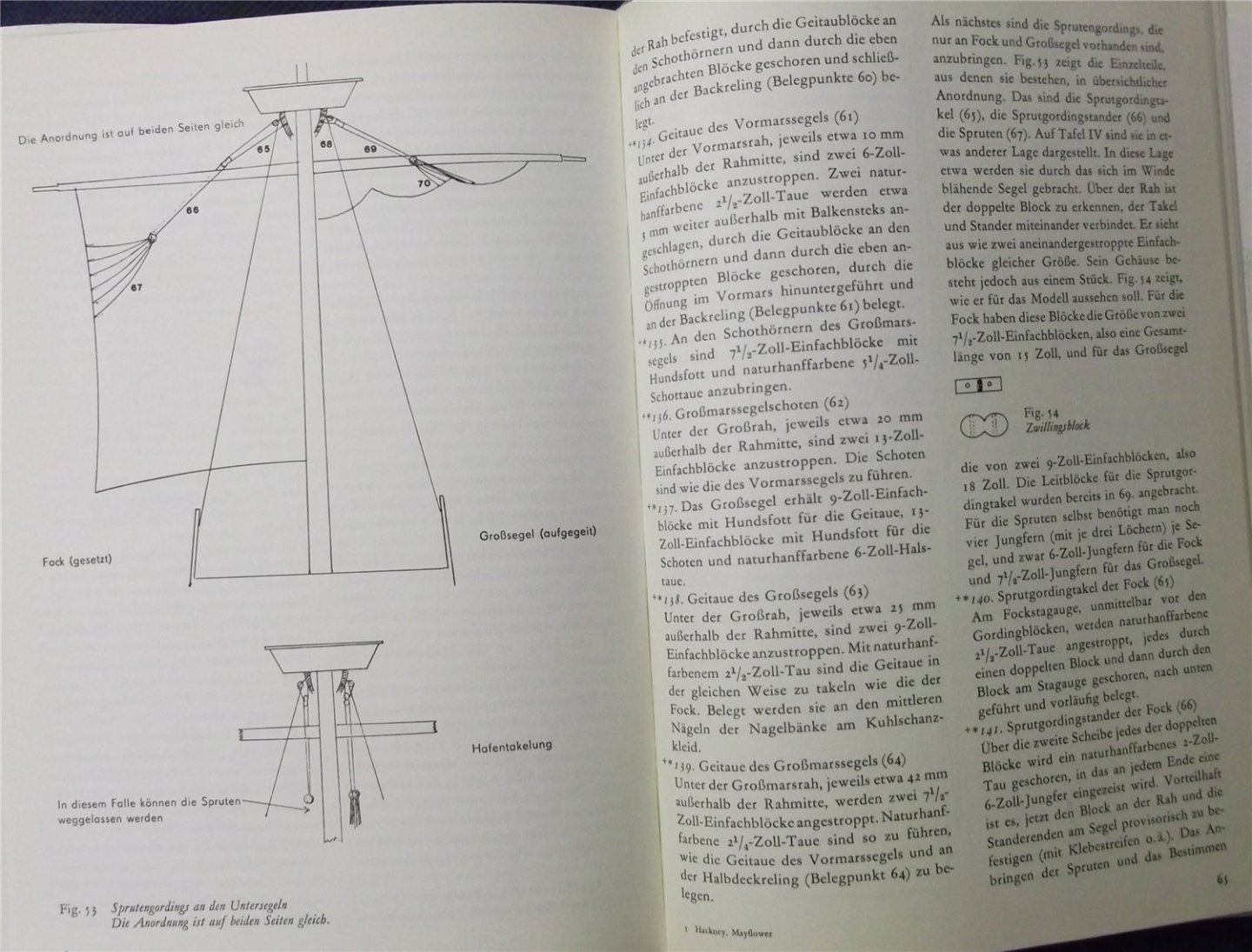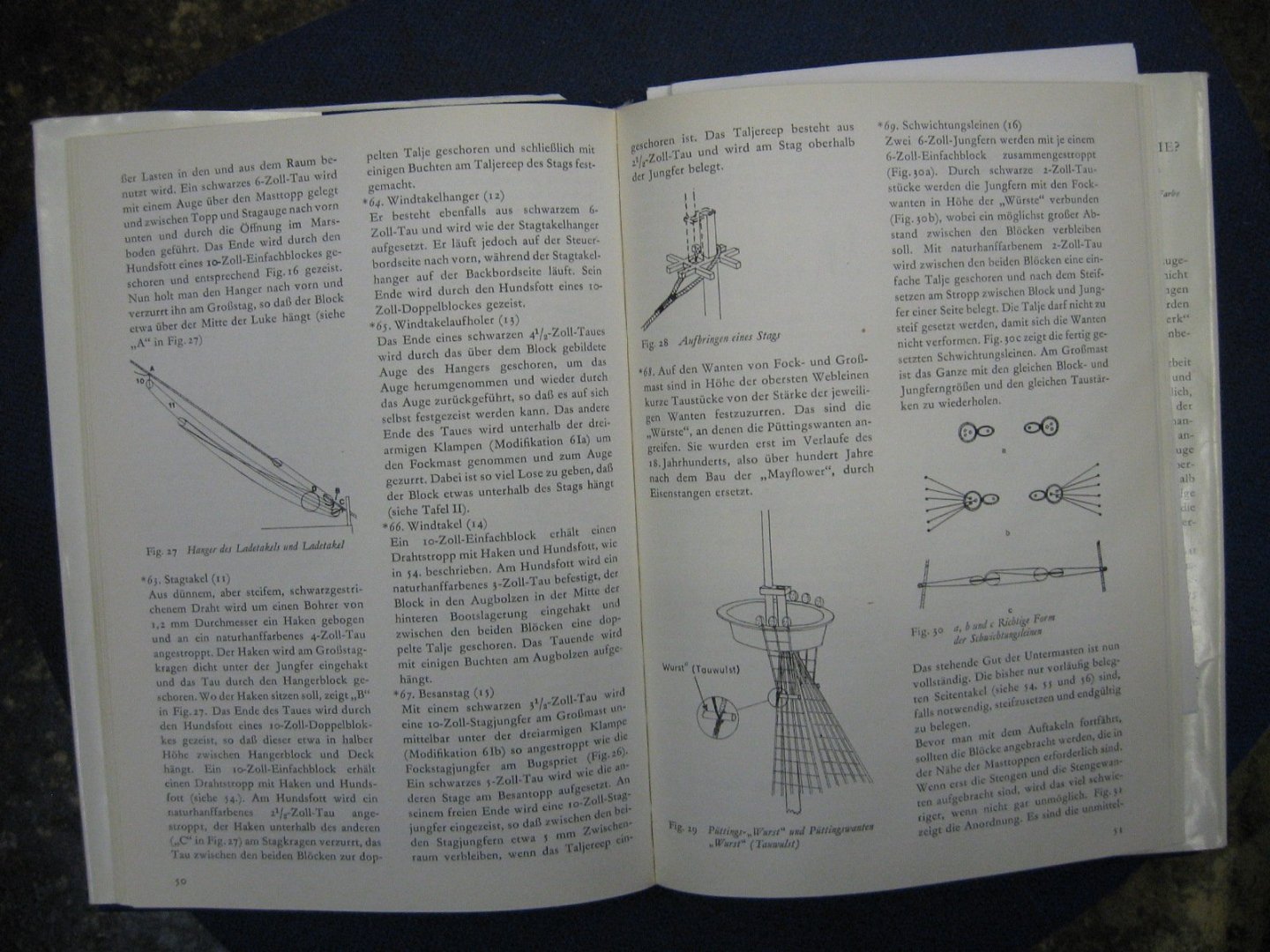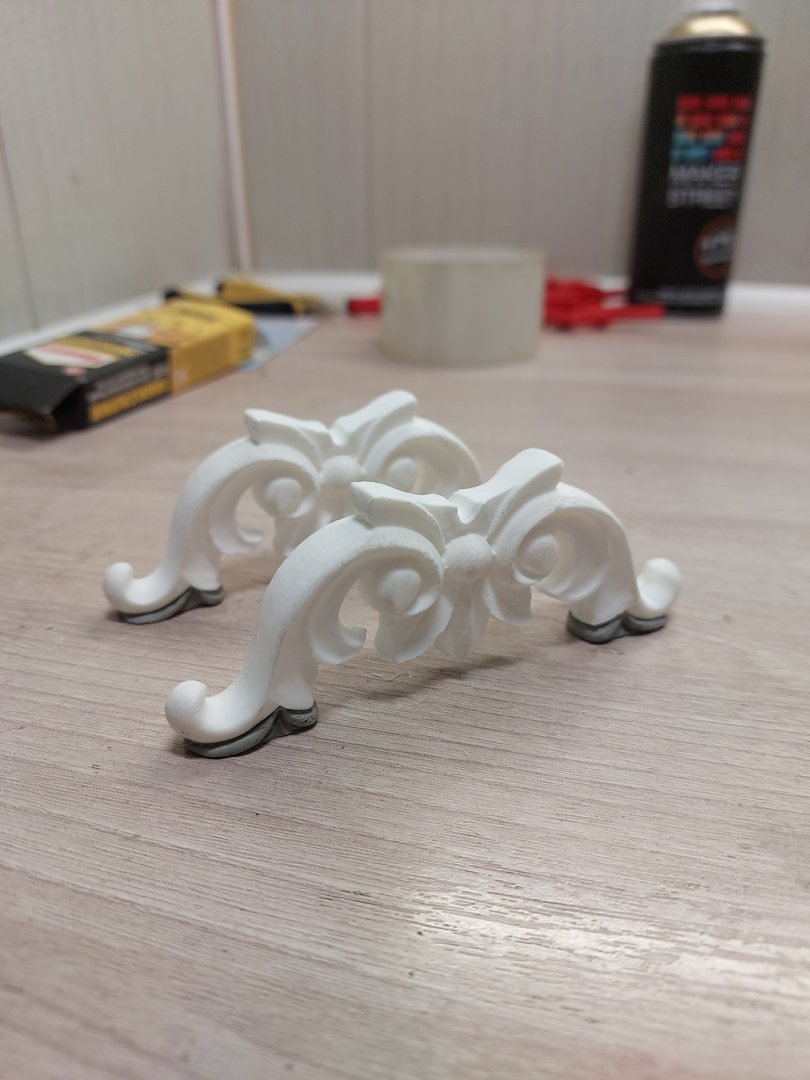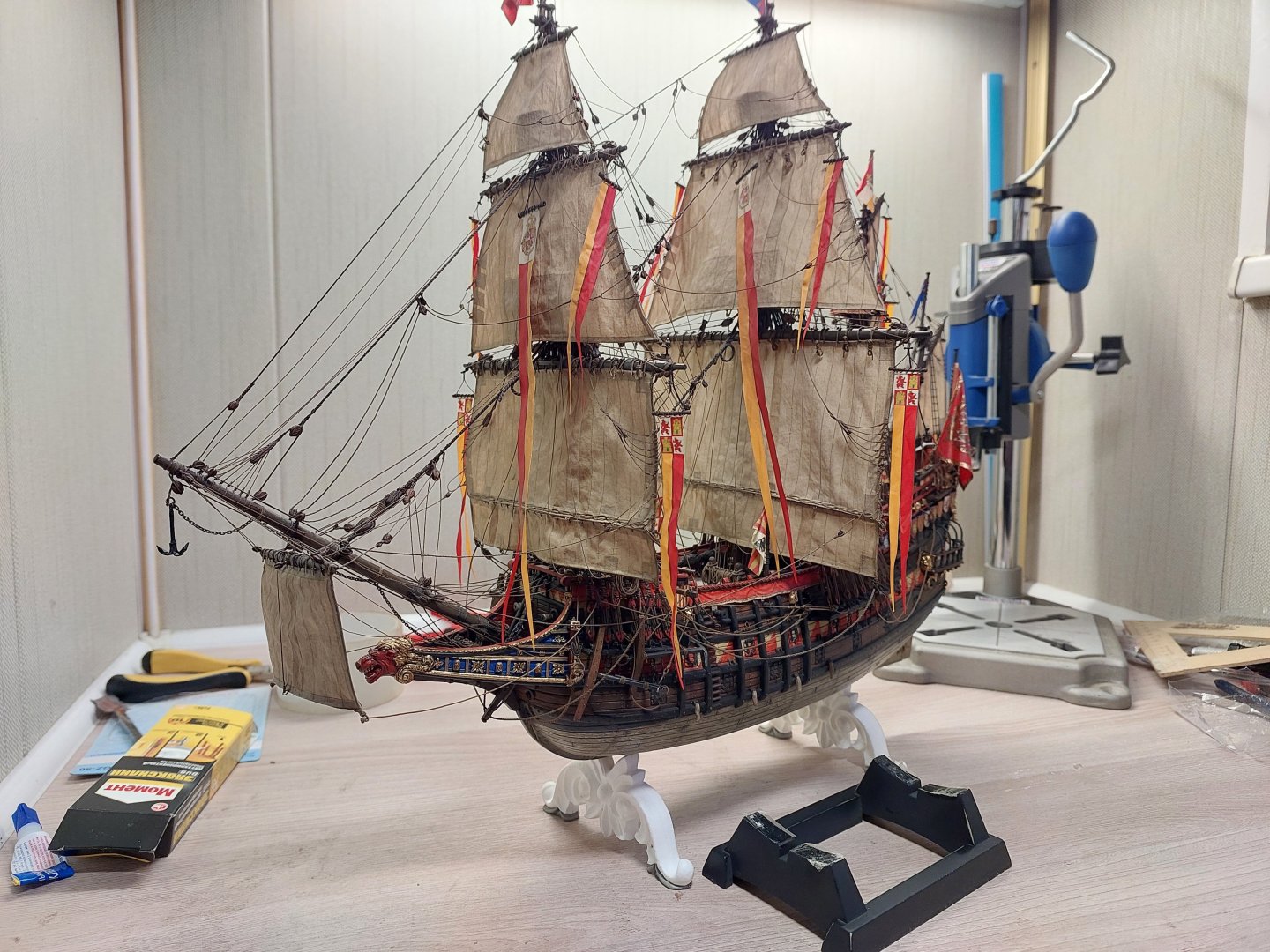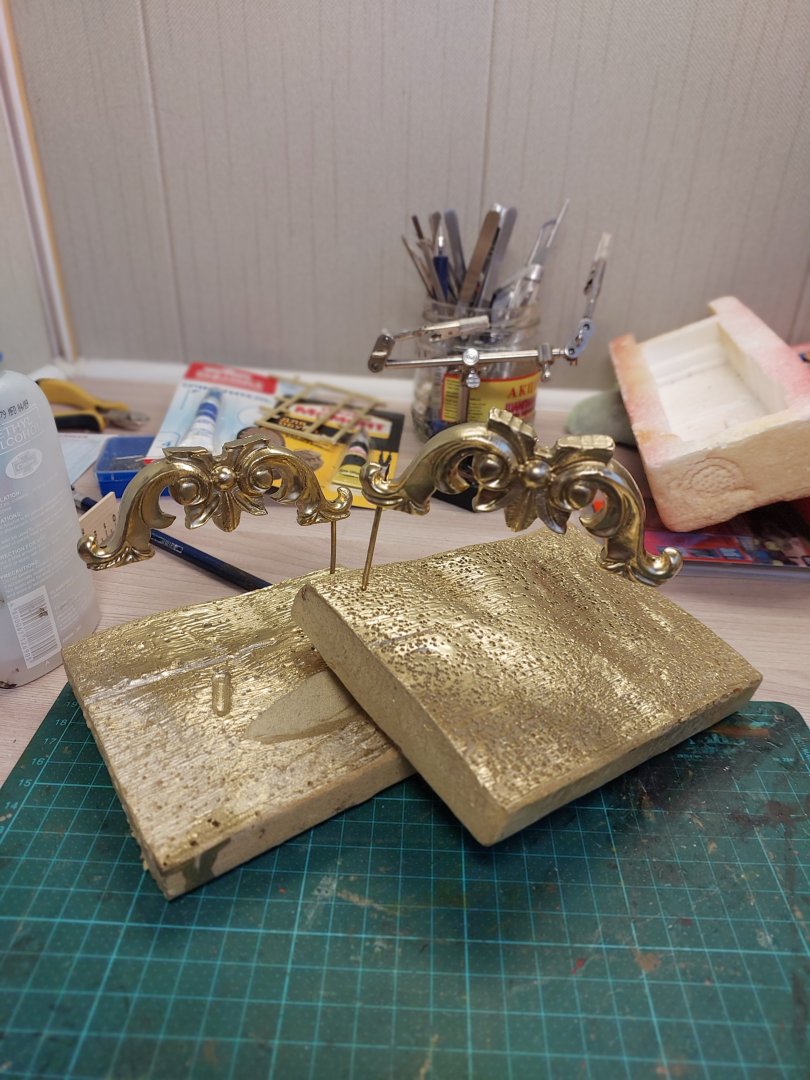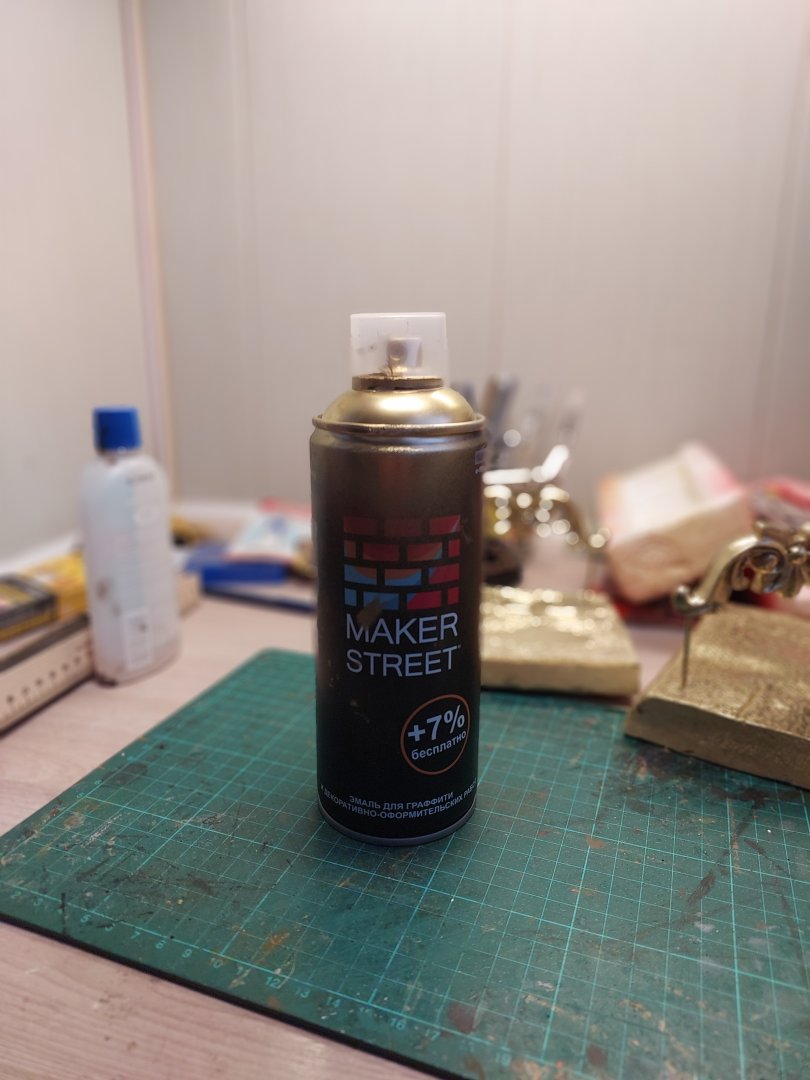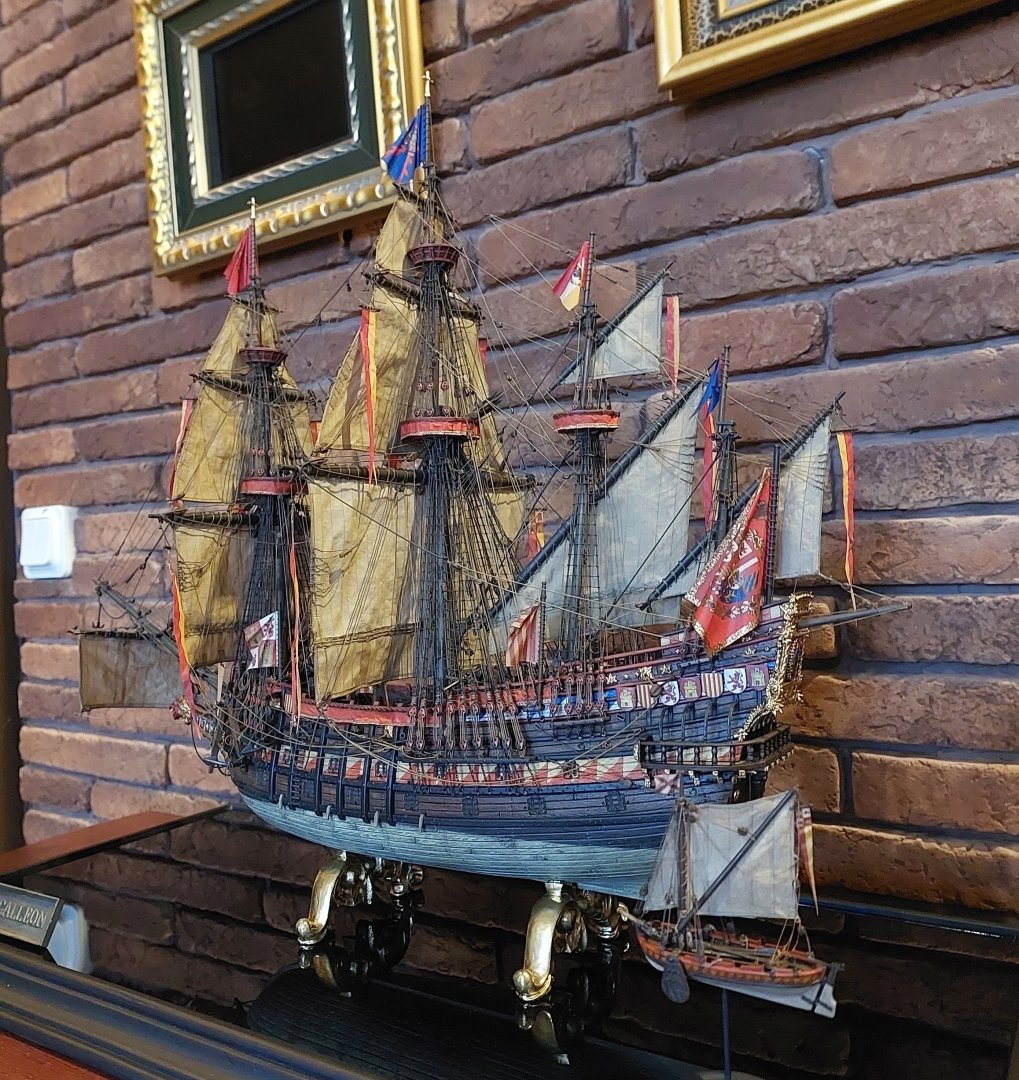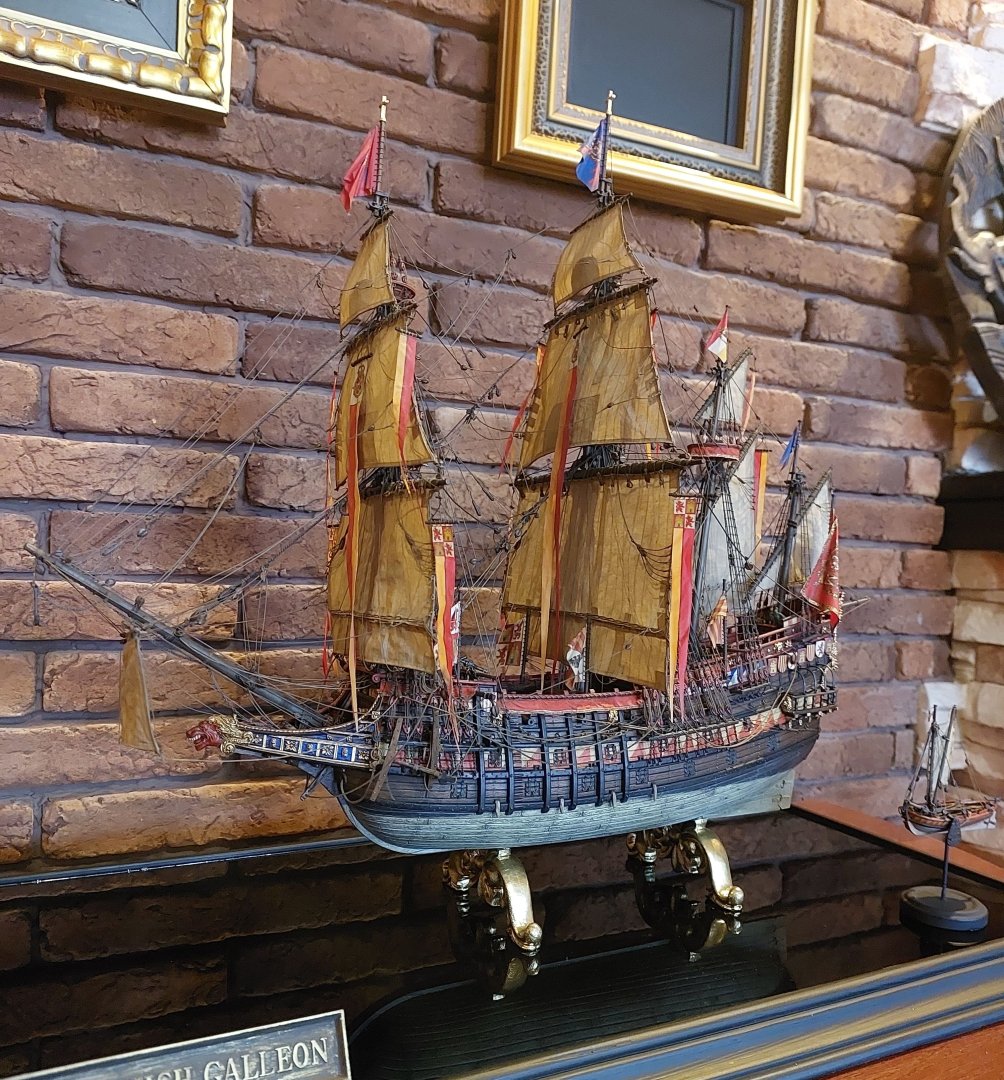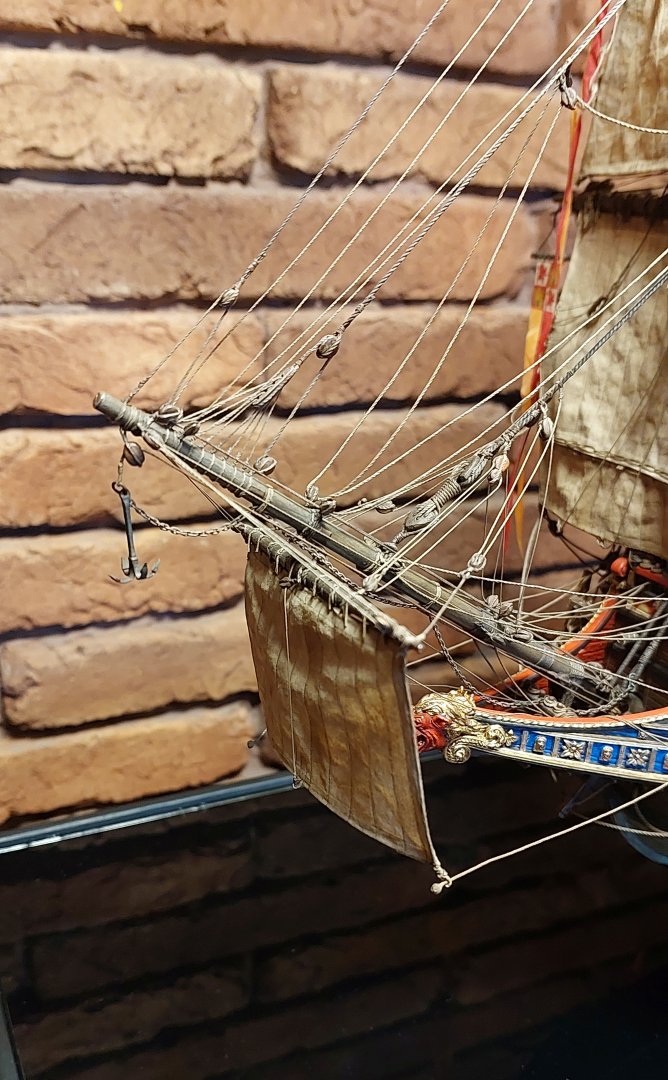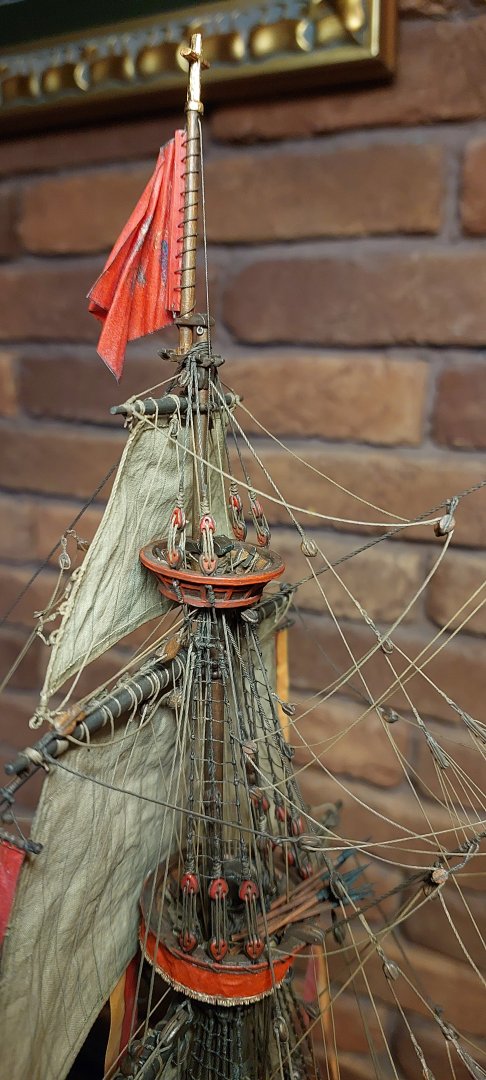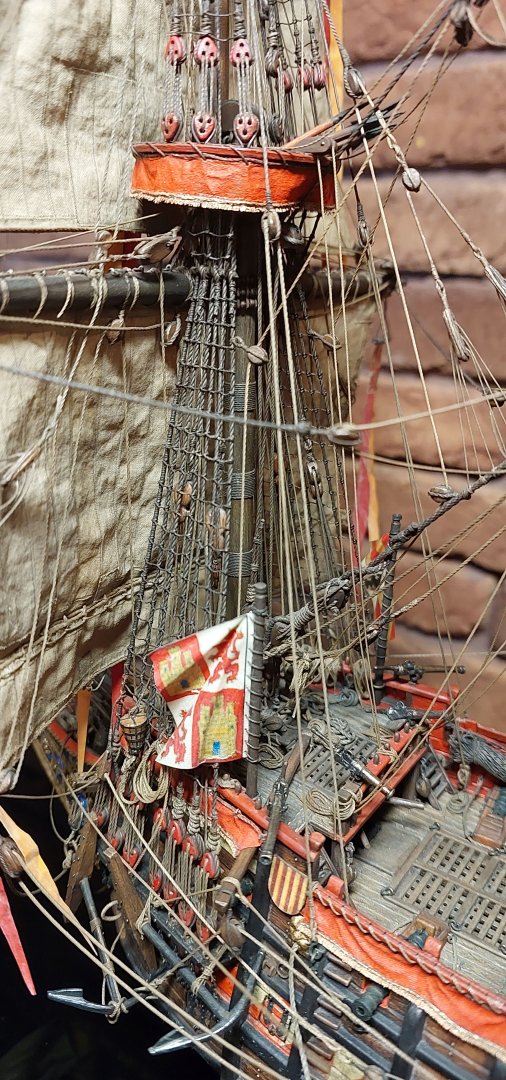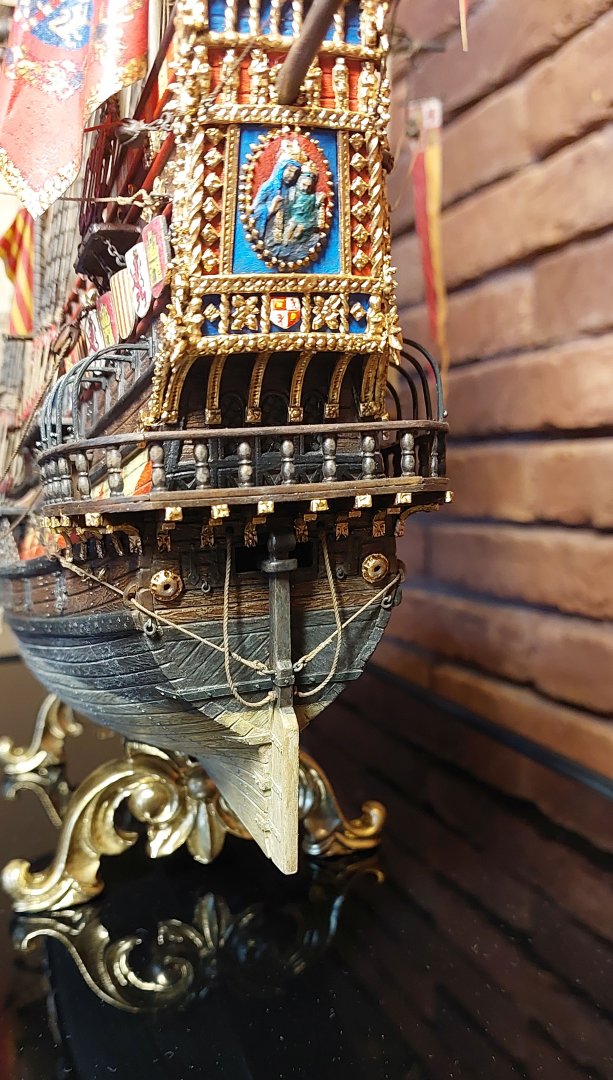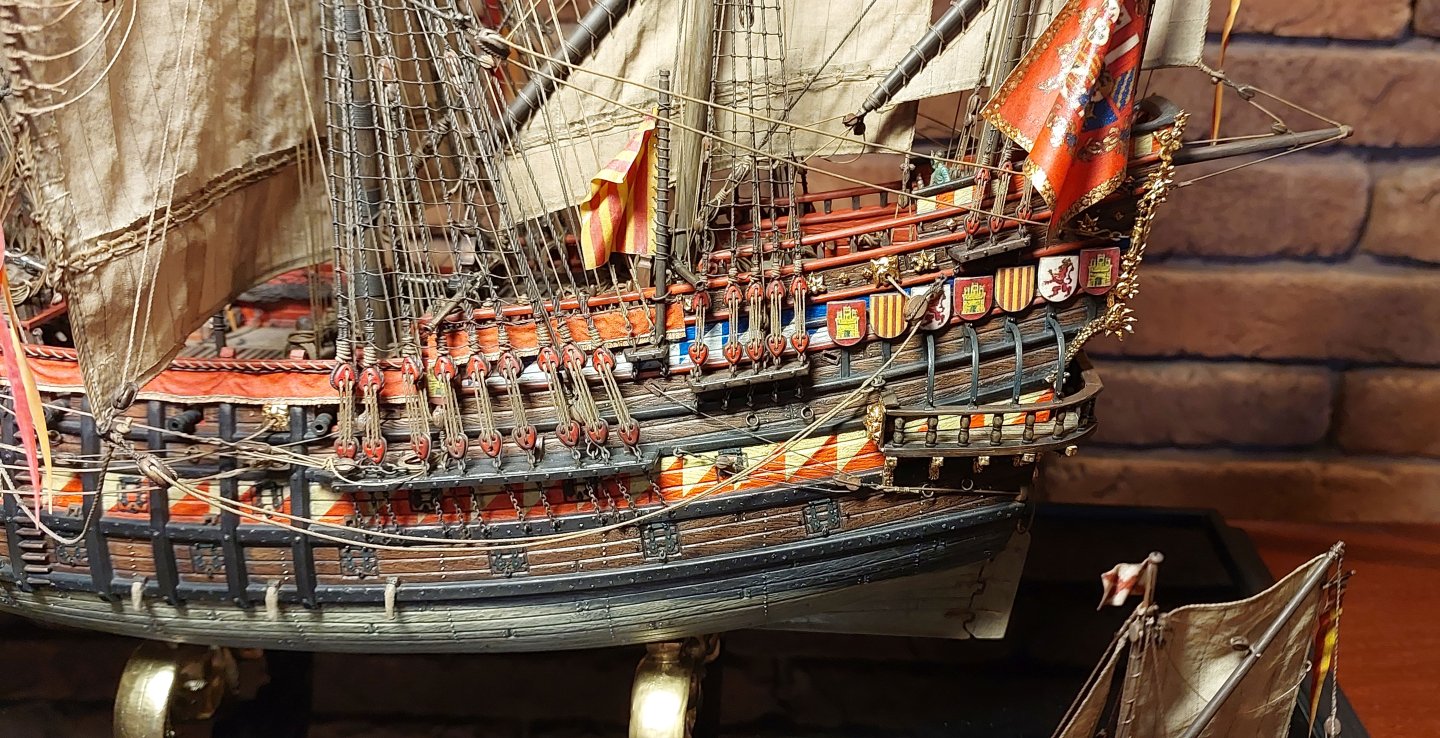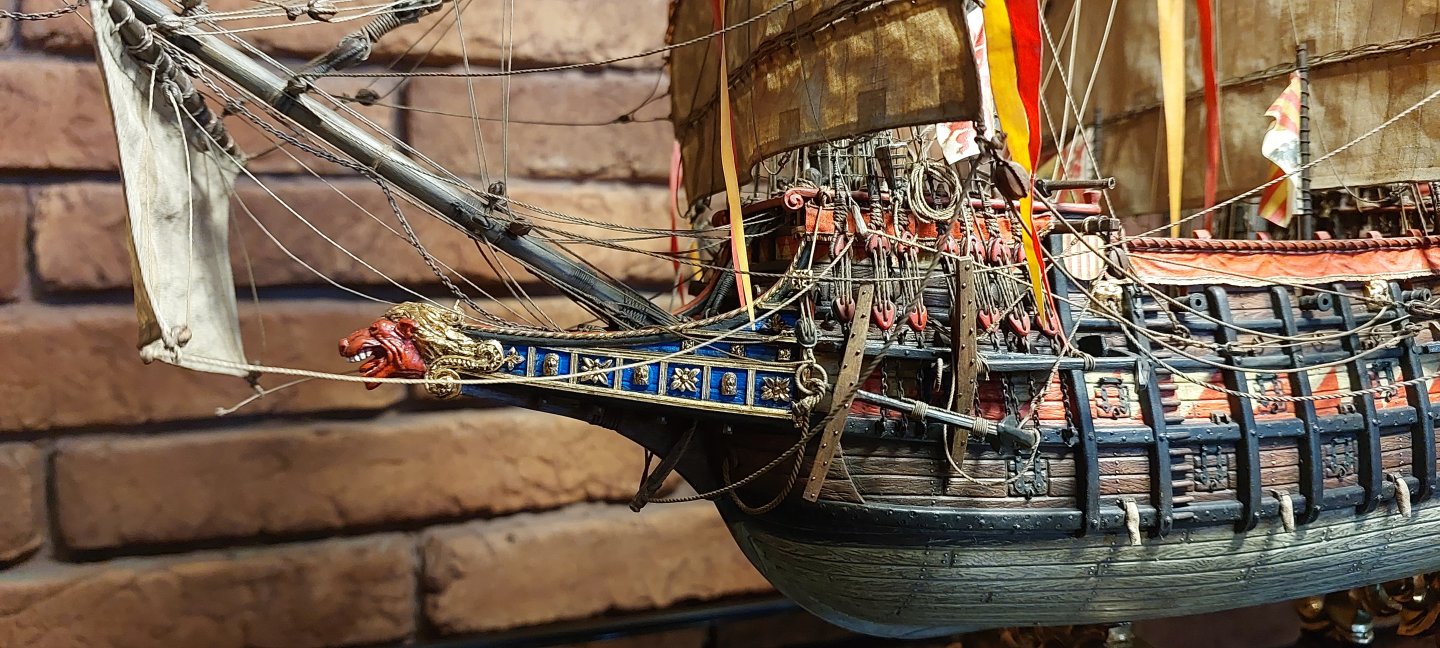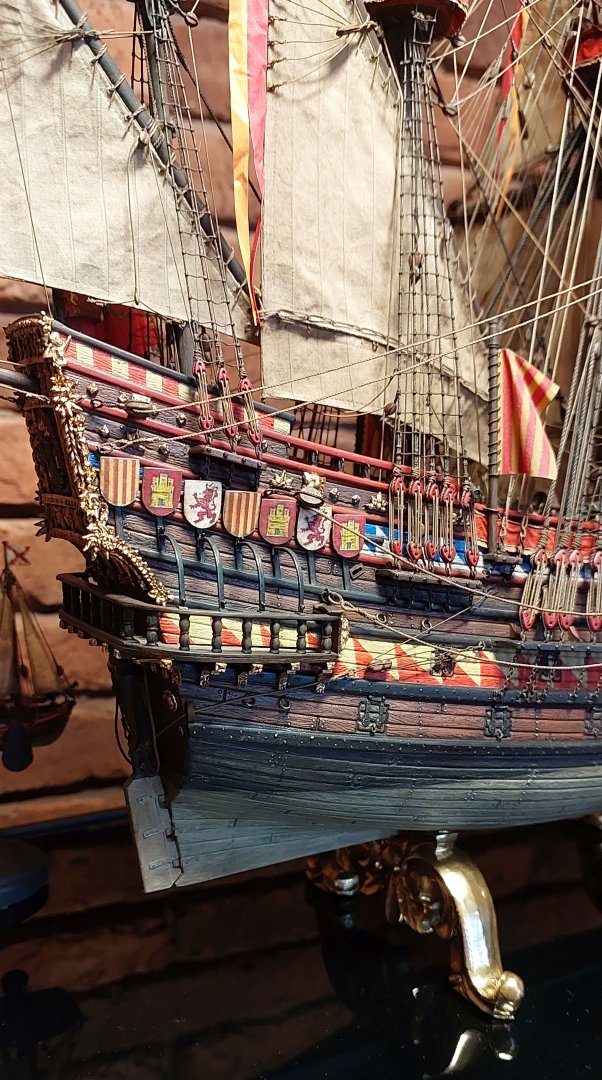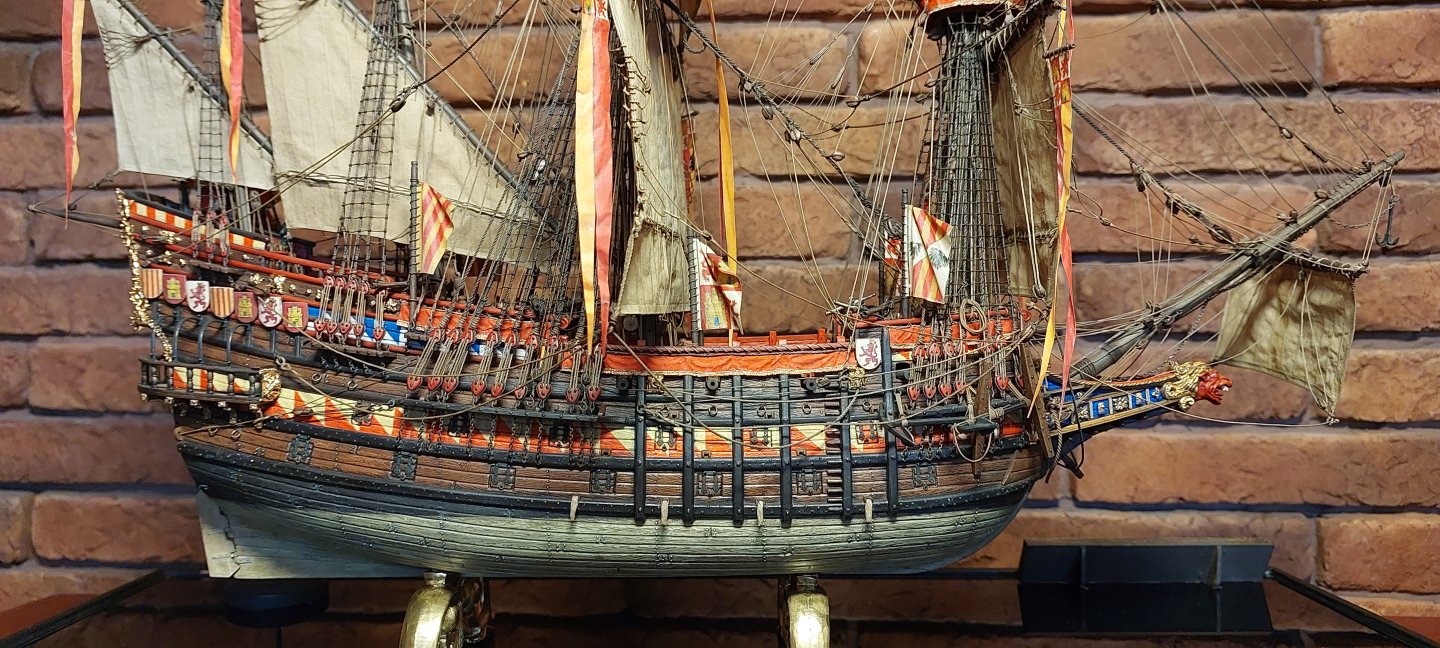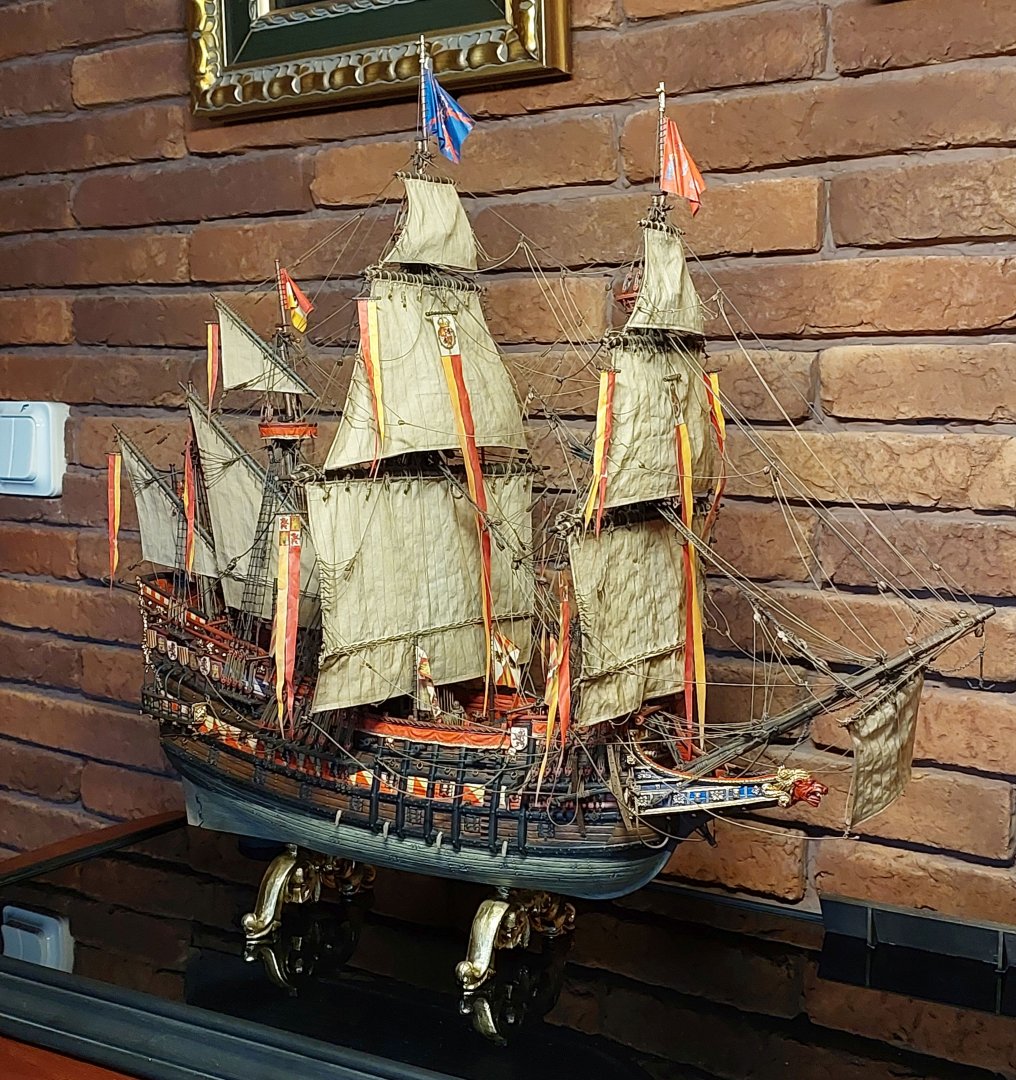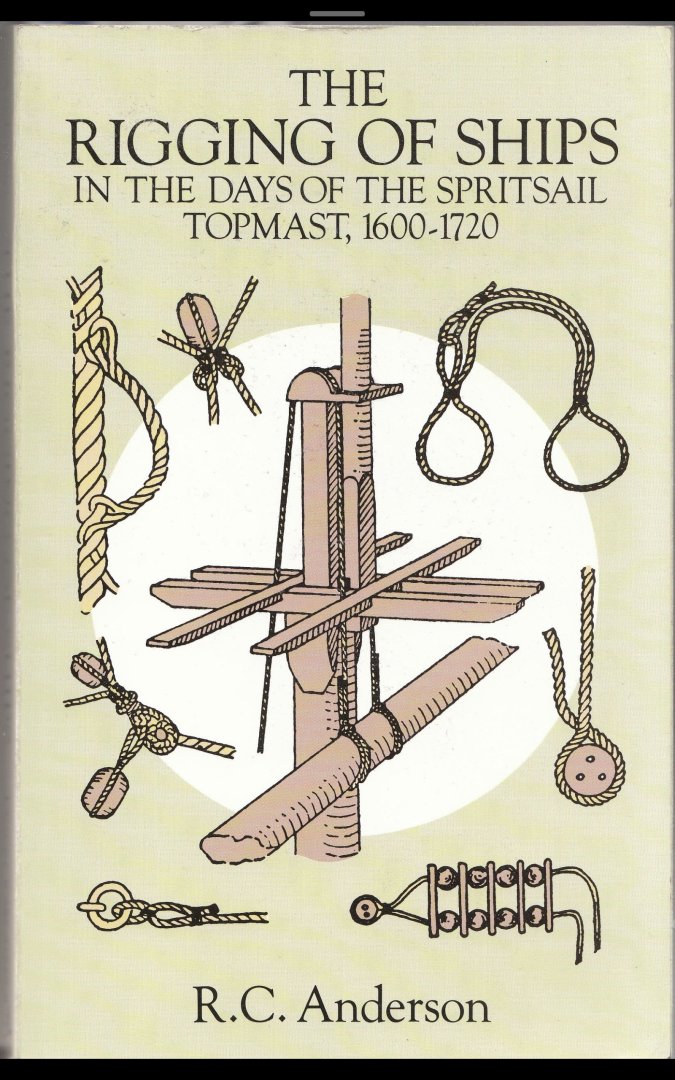-
Posts
907 -
Joined
-
Last visited
Content Type
Profiles
Forums
Gallery
Events
Everything posted by kirill4
-
Good day! Dear Tomasz, Please check https://www.segelschiffsmodellbau.com/t6619f952-Alternative-Rekonstruktion-der-GOLDEN-HIND-10.html There could be interesting information ... if You go through various reports , there is even model which was made on these researches based on alternative version of GH... - see construction report section... There are a lot of pictures ( plates)with rigging details and belaying points as well... but need to be registered on that site...
-
Good day Patrick, Thank You! I will try to do it a little bit faster than previous one :)))!!! ... at least, I already have 3D printed set of all necessary blocks, and recently received set of a few caliber s of guns - sets of barrels and carriages... ship's boat I have - this is "medival boat from" Zvezda" " which I wanted to convert into galleon boat... decks I think need to be reffited and make from instant noodles plastic conteiners, masts I planned to make from additional set for galleon Revenge - that one made by Shipyard... also planned to use some plastick sticks by Evergreen.... Decor elements I think I will order by 3 D prints as a basic set, and than to replicate each elements / them , by using some two components modeling staff ... so to speak, have everything for starting and continue this project exept time as usual :))) Wish You All The Best!!!
- 30 replies
-
- Golden Hind
- Airfix
-
(and 1 more)
Tagged with:
-
Great!!! Can't believe my eyes how You manage all these in such miniature sizes!!!
- 301 replies
-
- Sovereign of the Seas
- Airfix
-
(and 1 more)
Tagged with:
-
All these performed examples are good... but, consider ,there are a few realy arrangements things which they works , on the full size vessels... Batavia replica, and Swain ( W.Barents ship replica) ... but how it was arranged on MF replica? Dave, If You will found something interestings, please give us actual arrangements of MF replica as it shown on the photoes..? This part of connecting fore stay and bowsprit and MS tay and F mast sray znd bowsprit ??? There must be here a lot of pictures of this thing in the internet....? ... may be there would be a photos of Susan Constant replica pictures, Half Moen replica, Golden Hind replica and so on .?where we could see later on such their rigging details and so on... that would be very interesting! All The Best ! Kirill
-
Good day, Dave, There are a few photo of W.Barents ship replica... there are also a couple of working ideas how to secure lower part of the stay gear - one - attaching main stay to the fore mast and another one - connecting fore stay to the bowsprit....actually both could be used for connecting fore stay ...
-
Good day, Your Variant A looks not so bad...!!! First I also used this one, but later on I cganged my mind and borrowed idea from Batavia ship replica rigging... :)... I could suggest first to prepair piece of rope with imitation of parcelling , than making kind of loop of necessary diameter from preliminary processed thread ( have been painted by artistic oil or acryl paints of suitable color and semi parcelled and painted again - painted threads much easy to work with, and they look more realistic than just unprocessed thread taking strait from the spool), let it good dry ,than making diagonal cutt in place of future connection and to glue them here by CA gel( not liquid CA).... for more reliable connection You can apply set of seizing here by simple knots applied very close to each other at this place... for making seizing better to use some kind of very thin mono thread or very thin any kind of thread , than thiniest than better which You could find...!
-
Dear All, Good day! A few last days were spent for playing and combining at one place pictures of Elizabethian galleon's decorations downloaded from internet for finding out suitable "decor" elements for this "Elizabethian- English" galleon ... As You could see , all findings presented on the pictures posted bellow, please consider all of these just as kind of concept for making model , how decoration could be looks like when it will be placed on the model, but don't consider that all shown colors on these drawings will be actually presented the same presented on the model... they all will be adjusted later on for the uniform levels colors of the model style , if I could say that... Presently, many fragments of the decoration just were pulled out from many sources and just directly placed on the drawing to see how it will works on the model style drawing suitable for Elizabethians galleon? ... By the way, If you could see, there is a kind of joke , when I was placed a faces of famous Elizabethian's navy officers taken from ancient tapestry in the frames instead of original canonic faces which most probably should be placed here based on ancient artists pictures ... see attached ... Wish all of you All the Best!!!
- 30 replies
-
- Golden Hind
- Airfix
-
(and 1 more)
Tagged with:
-
Thank you very much my friend! I have bad expectations that it will take some time :))) ... The progress in the construction will go very slowly, I'm afraid ... Remember my previous project, which occupied all almost 15 years from beginning to the end, actually , in fact I was busy with the model for several weeks during the year, but ... in any case, I can’t promise fast construction in this case :))), if you have some proposals, questions, etc., please don't hesitate to ask ...
- 30 replies
-
- Golden Hind
- Airfix
-
(and 1 more)
Tagged with:
-
Thank You Michael! Indeed, it occupated my brain a several years allredy..need to do something with it!!! :)))!!! Im thinking about decoration now... for me it is most difficult part of the project...due to lack of my own imagination :), I would like to combine/or making mix of some decorative elements of Piter Kirsch studies of his english galleon, Eugen Troppmann galleon reconstruction based on Aker 's "GH" galleon reconstruction https://www.segelschiffsmodellbau.com/t6619f952-Alternative-Rekonstruktion-der-GOLDEN-HIND.html and famous art picture by Vroom( that of" Repulse." - in the right corner ofcthe picture ...galleon decor I like very much! ..
- 30 replies
-
- Golden Hind
- Airfix
-
(and 1 more)
Tagged with:
-
Good day Loracs, There should be couple of mast tackles( or side tackles )as they named in Ab Hoving book, on each side of the mast... back stays ( roughly say they used to support top masts) - they are different gears of their functionality, and arranged not like mast tackles ...I have posted pictures from Ab Hoving book, both these rigging lines were shown... those examples, from pinnas model,which You posted. they are very good!
-
Hi all! Dear friends , Finally, I got around to assembling another galleon kit in pair with its Spanish counterpart. This time it will be an English, Elizabethan galleon based on the famous model of the English galleon Elizabeth Jonas 1598 https://collection.sciencemuseumgroup.org.uk/objects/co40957/elizabethan-galleon-elizabeth-jonas-model-representation The donor will be a set from Airfix "Golden Hind 1578, 1:72". I changed the set scale to 1:100. On this scale, the length along the keel will be 23 cm (actually 23 meters), maximum width 7.92 cm (actually 7.92 meters) hold depth 4.7 cm (actually 4.7 meters) With these dimensions the capacity would be 305 tons and total 405.6 tons (increased by 1/3). For comparison, the dimensions of the Elizabeth Jonas galleon are 684/855 tons. In the pictures, for the sake of interest, I indicated some overall dimensions and models 1:100 and on a scale of 1:1... in principle, on this scale, everything is easy to recalculate. Another picture shows these two ships, a reconstruction of the Elizabeth Jonas (100 ft keel) and a set of plastic Golden Hind (76 ft keel) compared in real size, so to speak. On a sheet of paper, for convenience, I made a drawing by hand, on a scale of 1:100; in the drawing, the body of the model with the changes already made: *beackhead lowered by approximately 7 mm *stern railing reduced in height *small changes in the location of the wales in the bow *added gun ports *out of interest, I showed the approximate location of the decks, what it might look like, based on the developments of Peter Kirsch and a drawing from a book unknown to me/a fragment posted by one of our colleagues. *extended the quarterdeck deck with the bulkhead moved *showed the location of the masts - a Bonaventure mast was added... In principle, the main overall dimensions are determined. The silhouette of the hull of this set looks too high, with an inter-deck distance of almost 2 meters, which could hardly be the case in reality. I will not make any fundamental changes to the geometry of the hull, so the model will be purely for interior with no claims to historical authenticity. Nevertheless, I will try to depict all the little details of the deck armament, spar, and rigging in as much detail as I can manage.
- 30 replies
-
- Golden Hind
- Airfix
-
(and 1 more)
Tagged with:
-
Good day Loracs, You have a very good progress in rigging as I could see! I have some thoughts regarding belaying points of mast ( or side tackles)tackles running end... as I could understand, if not mistaken, they should be coiled and secured somewhere at/on the lower block of the tackle, 1st ring bolt for the tackle pozitioned in the forward part of the chanell and 2nd,in a few deaeyes aft on the chanel?...there You have a few free eye bolt. The last aft eyebolt on the channel used for securing the back stays tackles as a rule... there are a few pictures from Ab Hoving book and from RC Anderson book... and galleon Elizabeth Jonas model ... where we could find such details...
-
Greetings! The work done is impressive! Very complex options were chosen both in the installation of the shrouds and in the wiring of the running rigging... I would hardly have been able to do that! But since everything planned was accomplished, that’s great! All the Best! Kirill
- 103 replies
-
- Soleil Royal
- Ship-of-the-line
-
(and 2 more)
Tagged with:
-
Good day Marc, That your idear for / how making long links - works very good! And final results looks very nice!!! However have some doubts regarding angles of each particular chain? May be there is sence to make some kind of carton patern or any other kind of paterns with preliminary drawn lines at correct angles of each shroud- chain link, to find out correct angle position ? And than to install each chains at correct angles?
- 2,696 replies
-
- heller
- soleil royal
-
(and 9 more)
Tagged with:
-
Good day Dave, Lines 10,27 -they are just fore and main course lifts , for correct rigging see apropriate pages in Anderson book, or drawing" fig.49 Toppnanten,Schoten.".. from that german book I posted above. By the way, in your kit drawings they wrongly shown running lines 11, and 28, which supposed to be topsail sheets... there should be two blocks rigged very close to each other (in english fashion) on the yard arms end - bigger one -for topsail sheet and smaller for passing lifts line...all details of this arrangements clearly explained in Anderson book and could be seen on that fig.49 as well.. Lines 13,34 - leechlines or martnets - see Anderson P168-169 or see page 64 fig 53 poz 67,66,65 in that german book scans which I posted above. As You could see, for this period, no leading blocks supposed to be secured to the top crosspiece as shown in your kit drawings, all these blocks need to be secured to the fore and main stays loops under the top , and lead blocks for fore and main / lifts running end , as a rule , stropped to the long strope to the mast tope above shrouds loops(fig.31 block A), and block itself attached to this long strope was placed bellow top platform... there are a few pictures and explanation much better than mine :))) about it in Anderson book... All the best! By my opinion, those pictures from german book in combination with Anderson book( I see this german author very closely followed Anderson guides in rigging) , are very handy for rigging your MF... better use them than kit drawings for your model rigging... All the Best! Kirill
-
Good day, Nice tops You made! Your question about blocks... " The rigging drawing shows a couple of blocks hanging from the bottom of the trestle tree with now part numbers. They seem to be part of the running rigging attached to the spars. I think using eyebolts to attach the blocks will be the way to go - there is no indication on the drawing. ..." Which one, these blocks ? Could You show them on the drawing? Most often, such blocks , under the tops, used for buntlines and leechlines rigging lines... All the best! Kirill
-
Good day, Dear Michael, Dave, Marc, GrandpaPhil, Thank you very much for attention and your kind comments! Wish you all the best! Kirill
- 228 replies
-
- spanish galleon
- lee
-
(and 1 more)
Tagged with:
-
Dear friends, colleagues in hobby,( all said bellow - google translated -have fan ! :))) I hasten to share joyful news! )) For me, at least for sure! The other day I painted the stands for this Galleon model, the idea that I had a couple of years in my head, probably, finally got its practical embodiment so to speak ... I ordered the elements of the decor of the stand on the "shop of the masters"( there is site in Russia where we could get some artistic hand made things of all kind , if we could say that), I cut the excess a little, so that it would more or less fit into the concept "stand holders " for the Galleon model ... .. about the photo shoot - I shot Samsung on the phone, and the quality of the photos ... in my opinion, as if very not very much , if not worse, but my just "normal "camera "Nikon" is bent unfortunately - I can’t insert the batteries into it - it gets out that the wrong battery system !!! :, and there is no other alternative yet ... In addition to quality, also the background, is not homogeneity as it should be for good model representation? but for the moment this is all I have ... Wish you all the best of the best!!! Kirill
- 228 replies
-
- spanish galleon
- lee
-
(and 1 more)
Tagged with:
-
Good day, Agree, they looks nice !!! But strange, when read those stories about SOS lanterns - when a few people were able to be accomodated inside??? - for one person may be there is sufficient room, but for more?
- 301 replies
-
- Sovereign of the Seas
- Airfix
-
(and 1 more)
Tagged with:
-
Good afternoon Michael ! It looks between good and very good !!! :))) You know, there are miniature plastic nets with rhomboid cells that can be borrowed for the manufacture of models lanterns - such nets are used for packaging garlic in vegetable stores, or a mosquito net also often has suitable cells ... household stores could be checked. I also saw on classic models such lanterns have an imitation of glass - black imitation glass with hand -drawn drawings of the framework inside like You presented now? I saw You used such net with diamond shaped cells in your smaller windovs? Or big lantern should have big glass panels? All the best!!! Kirill
- 301 replies
-
- Sovereign of the Seas
- Airfix
-
(and 1 more)
Tagged with:
About us
Modelshipworld - Advancing Ship Modeling through Research
SSL Secured
Your security is important for us so this Website is SSL-Secured
NRG Mailing Address
Nautical Research Guild
237 South Lincoln Street
Westmont IL, 60559-1917
Model Ship World ® and the MSW logo are Registered Trademarks, and belong to the Nautical Research Guild (United States Patent and Trademark Office: No. 6,929,264 & No. 6,929,274, registered Dec. 20, 2022)
Helpful Links
About the NRG
If you enjoy building ship models that are historically accurate as well as beautiful, then The Nautical Research Guild (NRG) is just right for you.
The Guild is a non-profit educational organization whose mission is to “Advance Ship Modeling Through Research”. We provide support to our members in their efforts to raise the quality of their model ships.
The Nautical Research Guild has published our world-renowned quarterly magazine, The Nautical Research Journal, since 1955. The pages of the Journal are full of articles by accomplished ship modelers who show you how they create those exquisite details on their models, and by maritime historians who show you the correct details to build. The Journal is available in both print and digital editions. Go to the NRG web site (www.thenrg.org) to download a complimentary digital copy of the Journal. The NRG also publishes plan sets, books and compilations of back issues of the Journal and the former Ships in Scale and Model Ship Builder magazines.

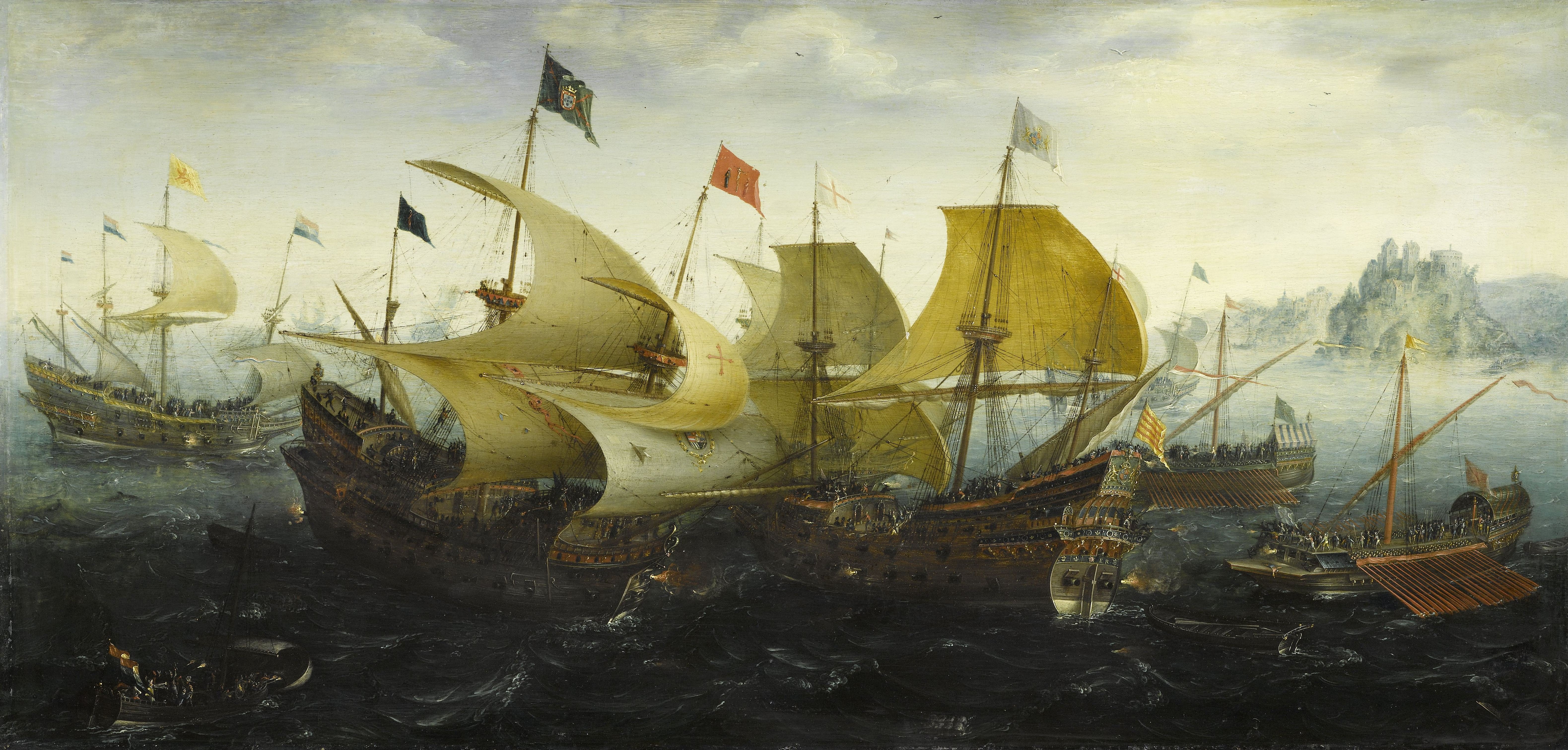
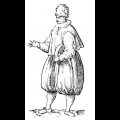

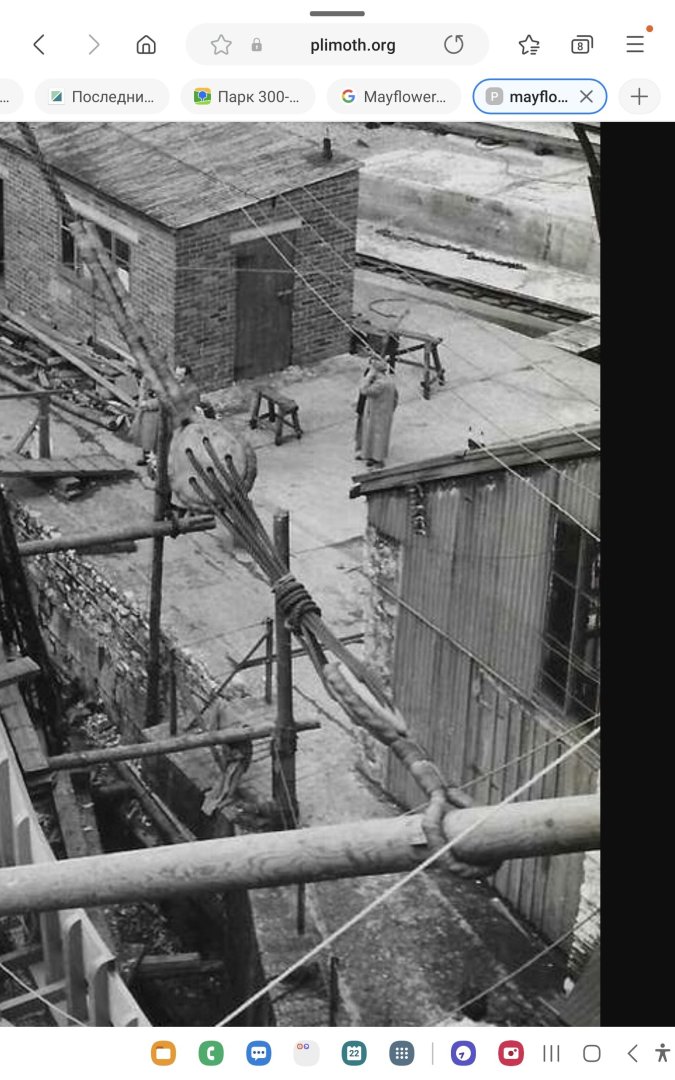
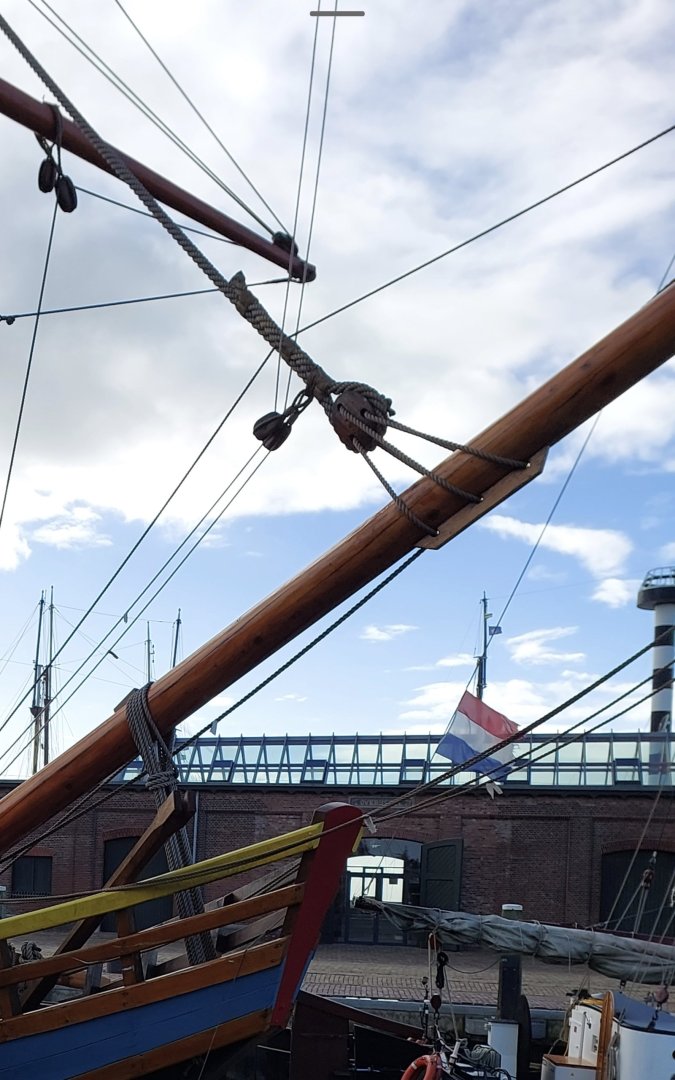
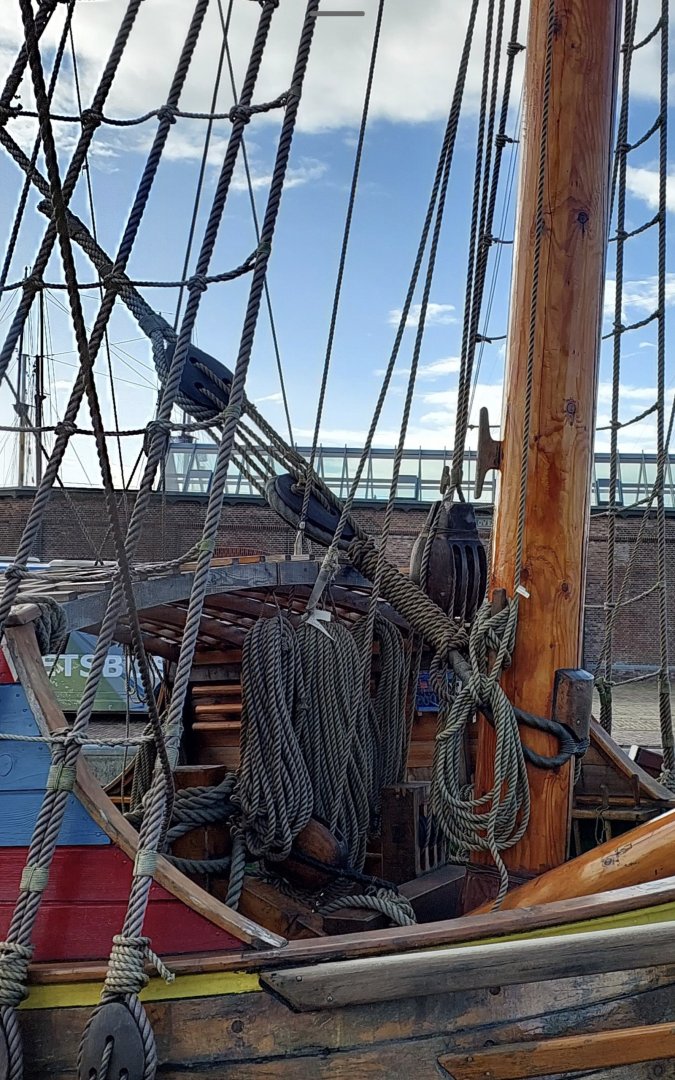
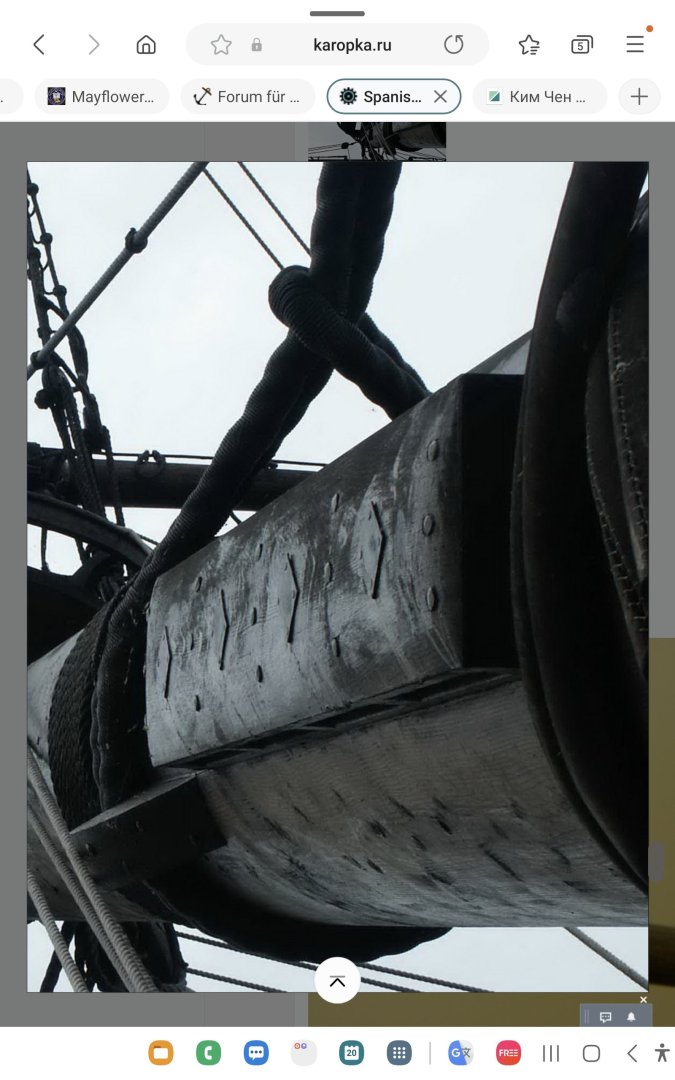
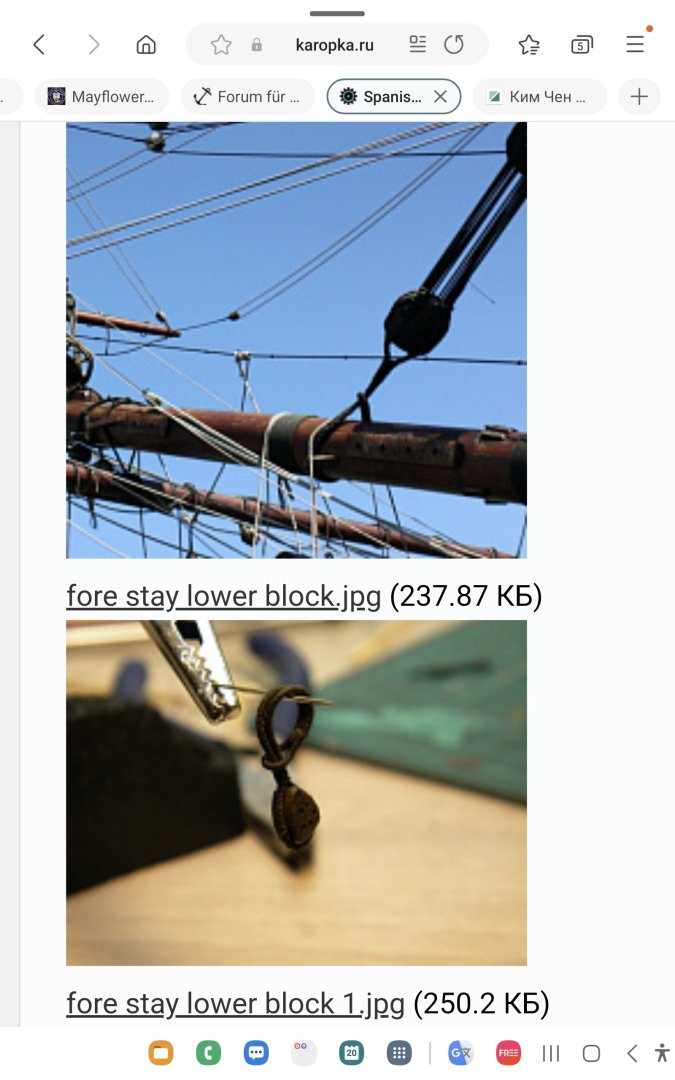
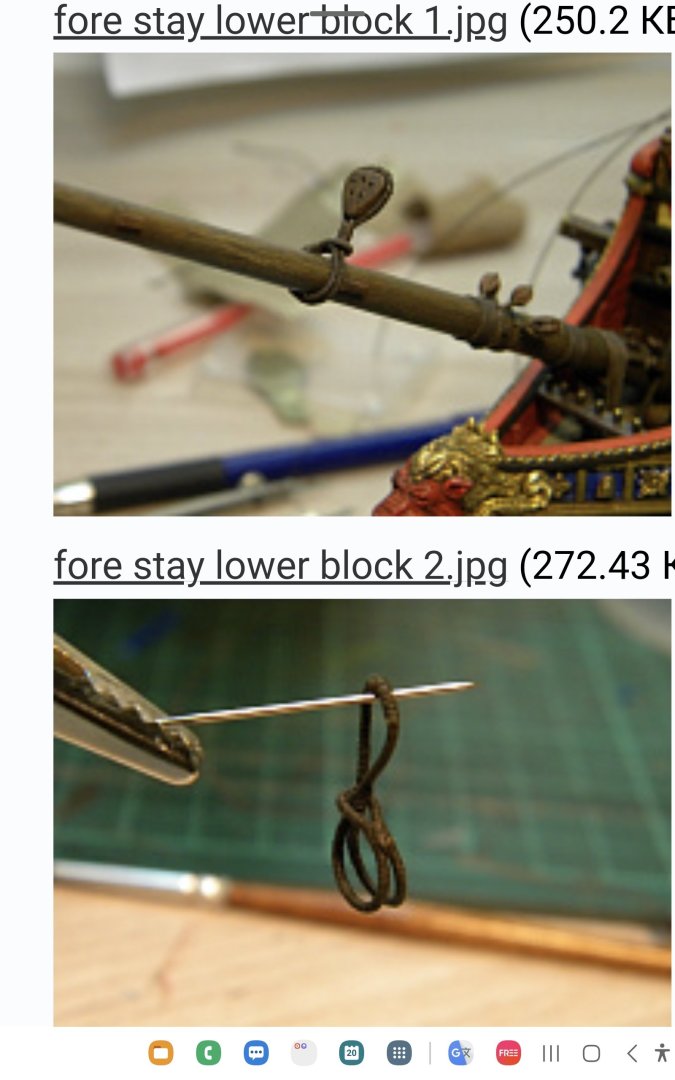
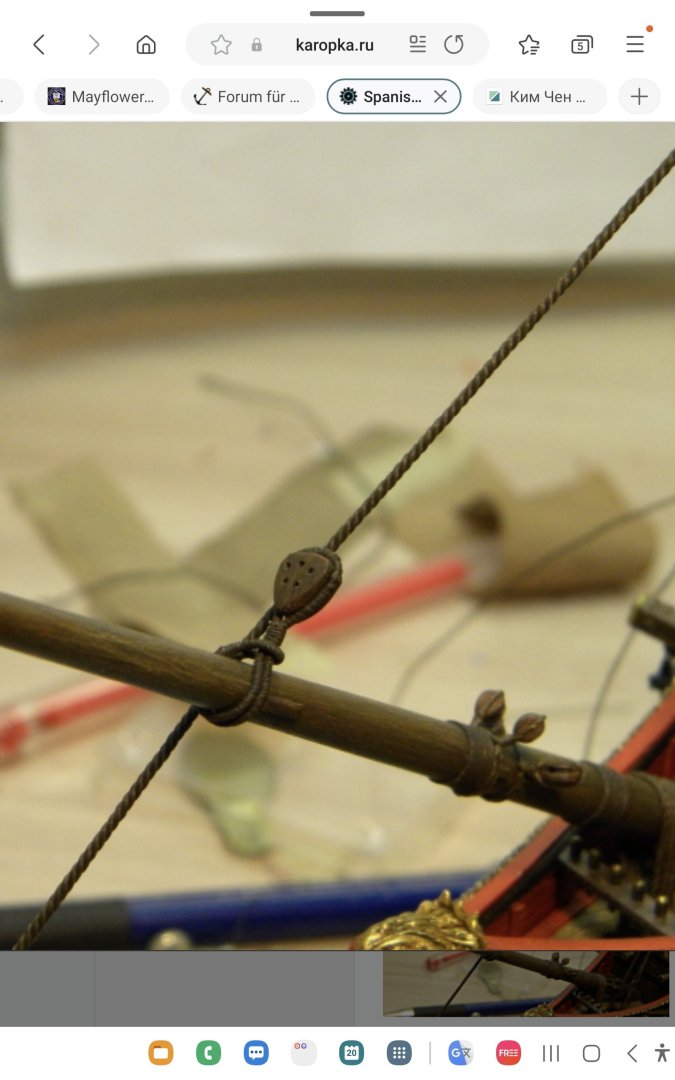
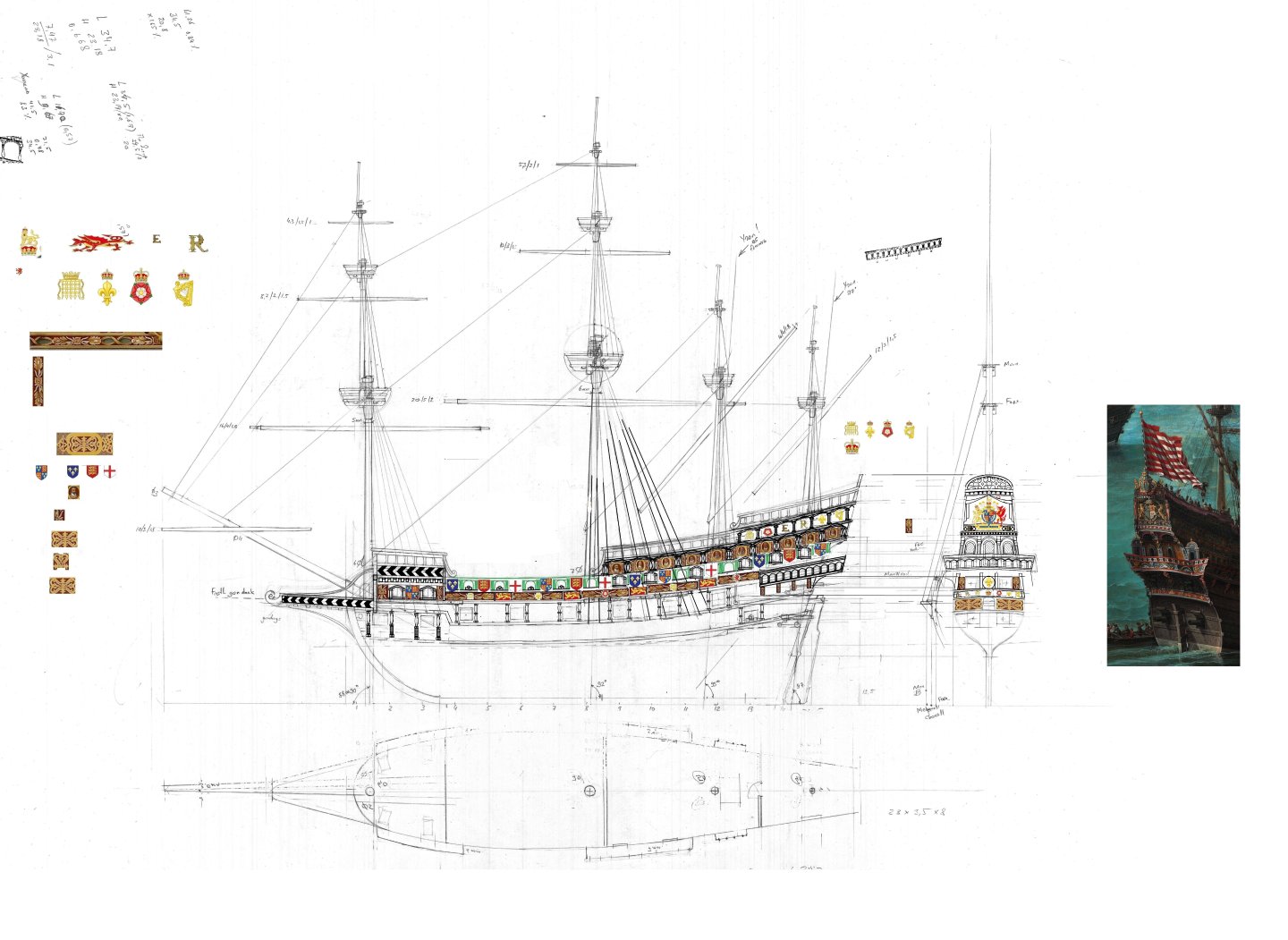
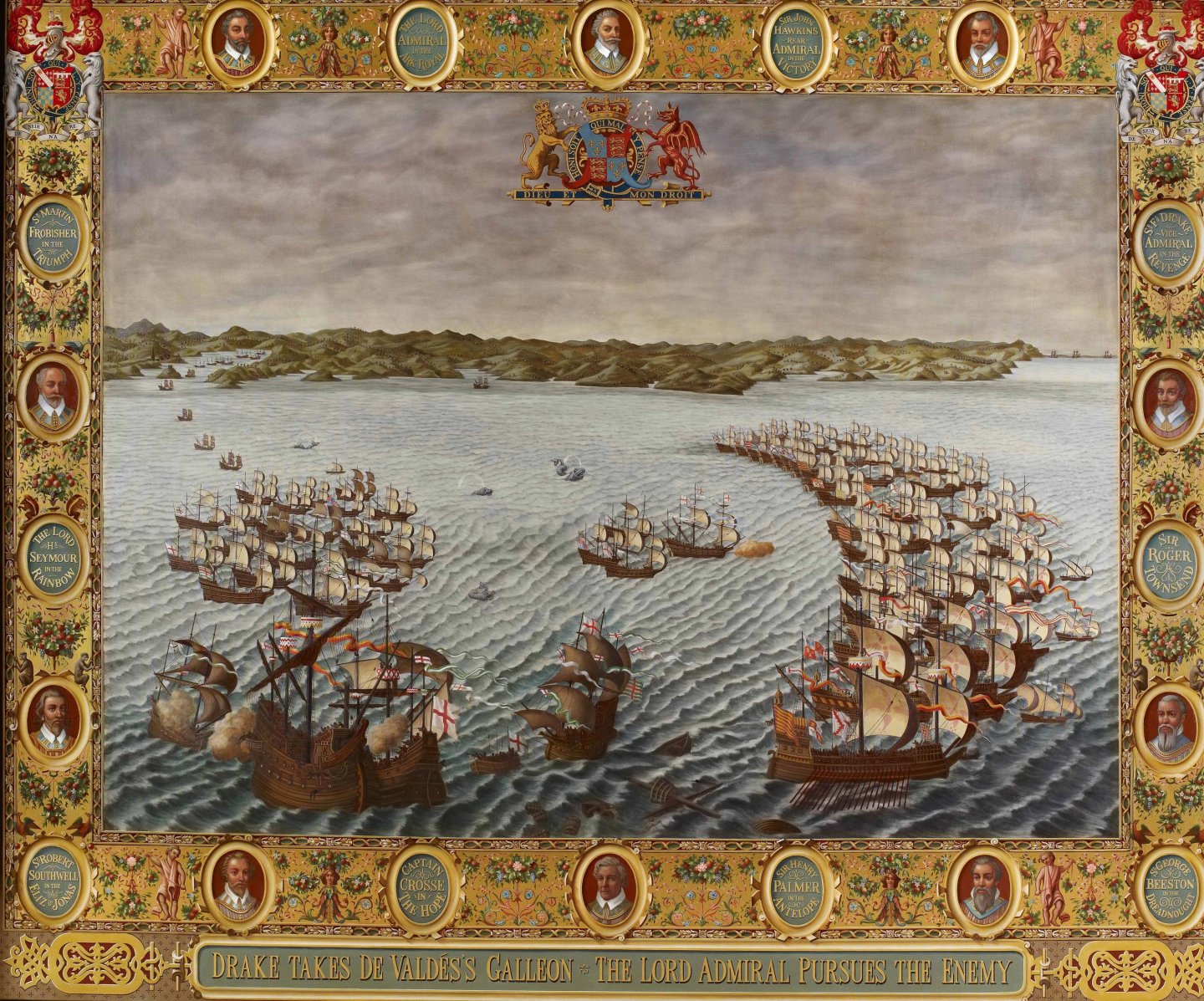
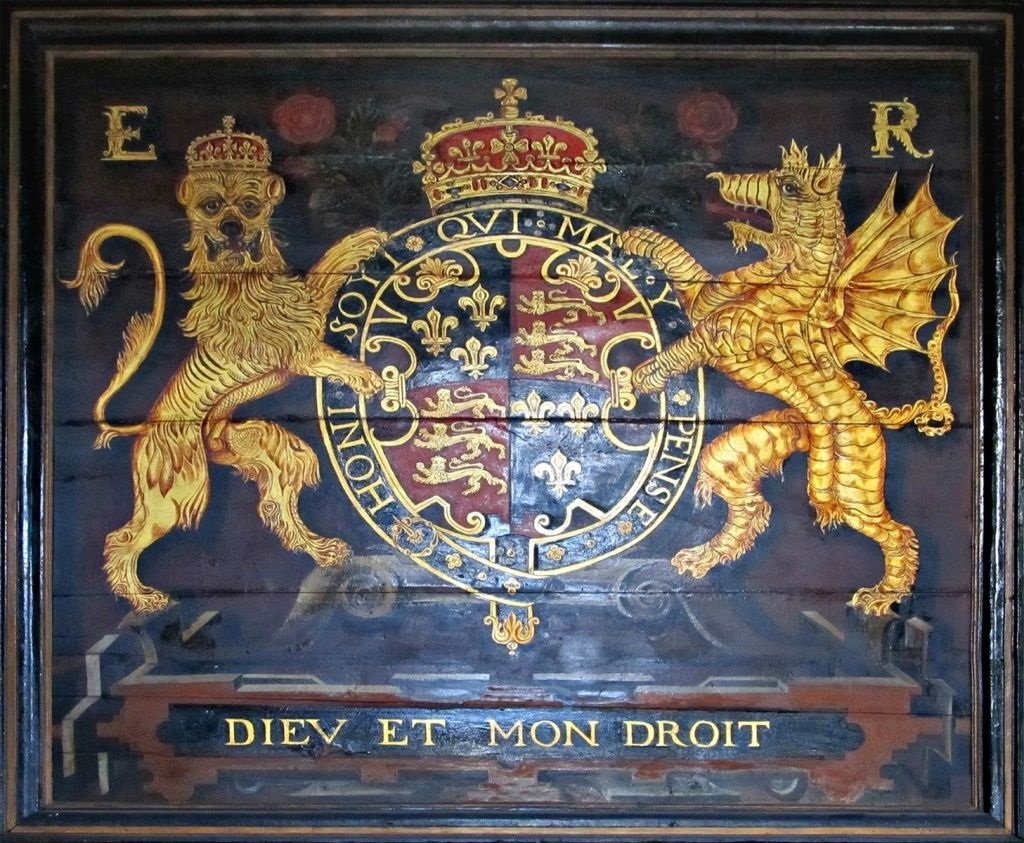
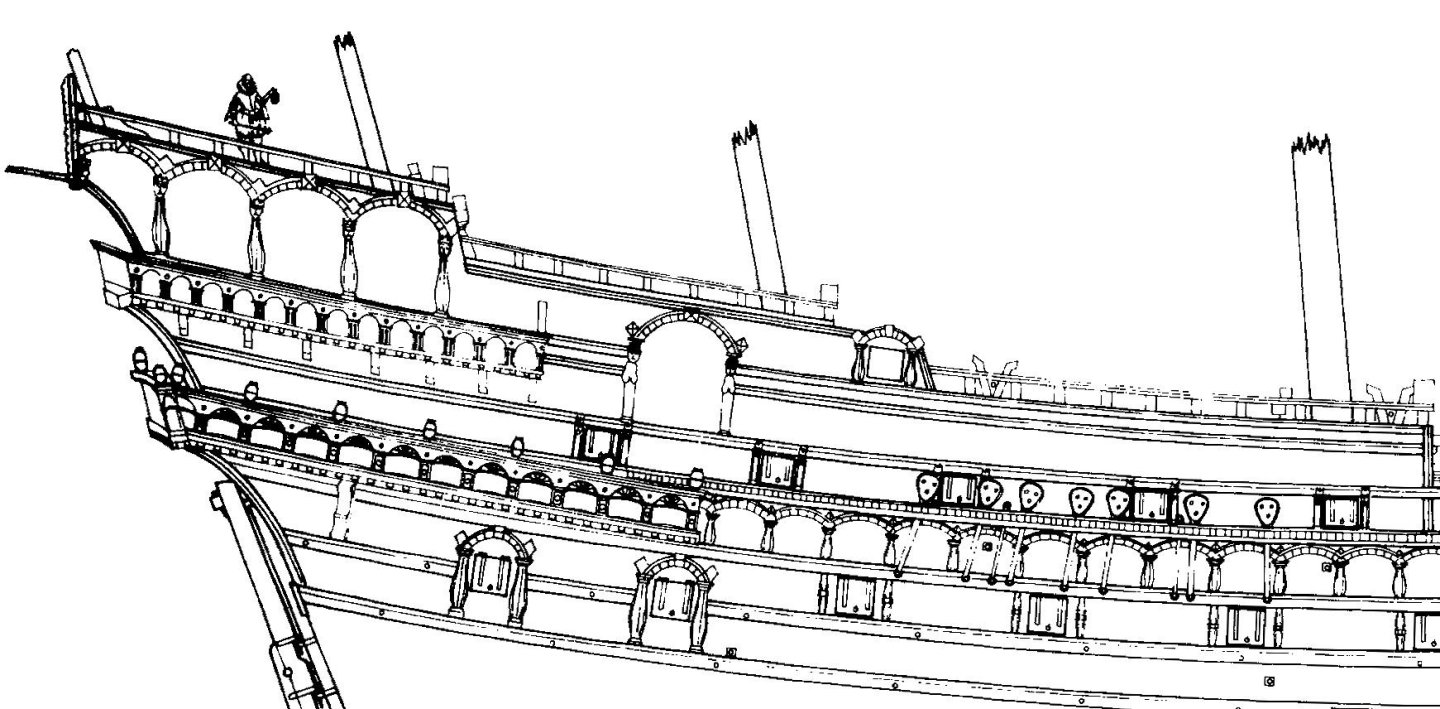
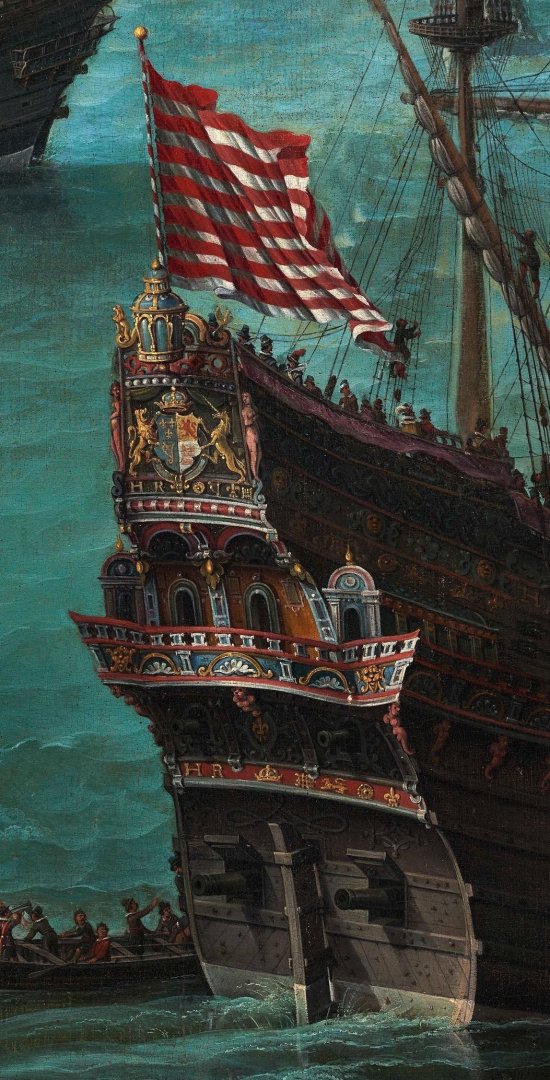
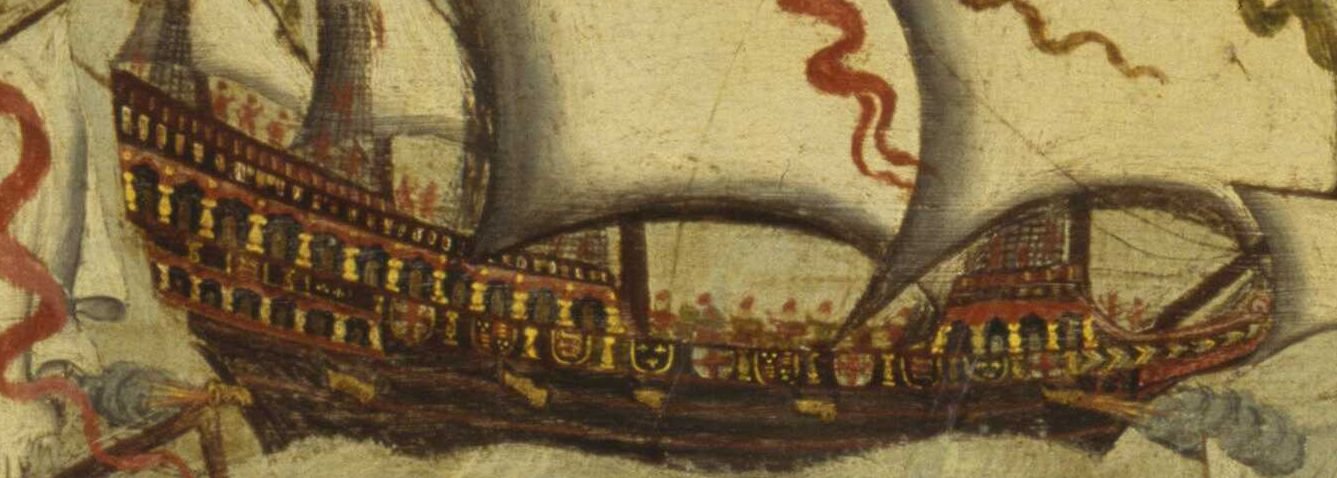
.png.fbaf4ae61030bea113cb044c68a34462.png)
